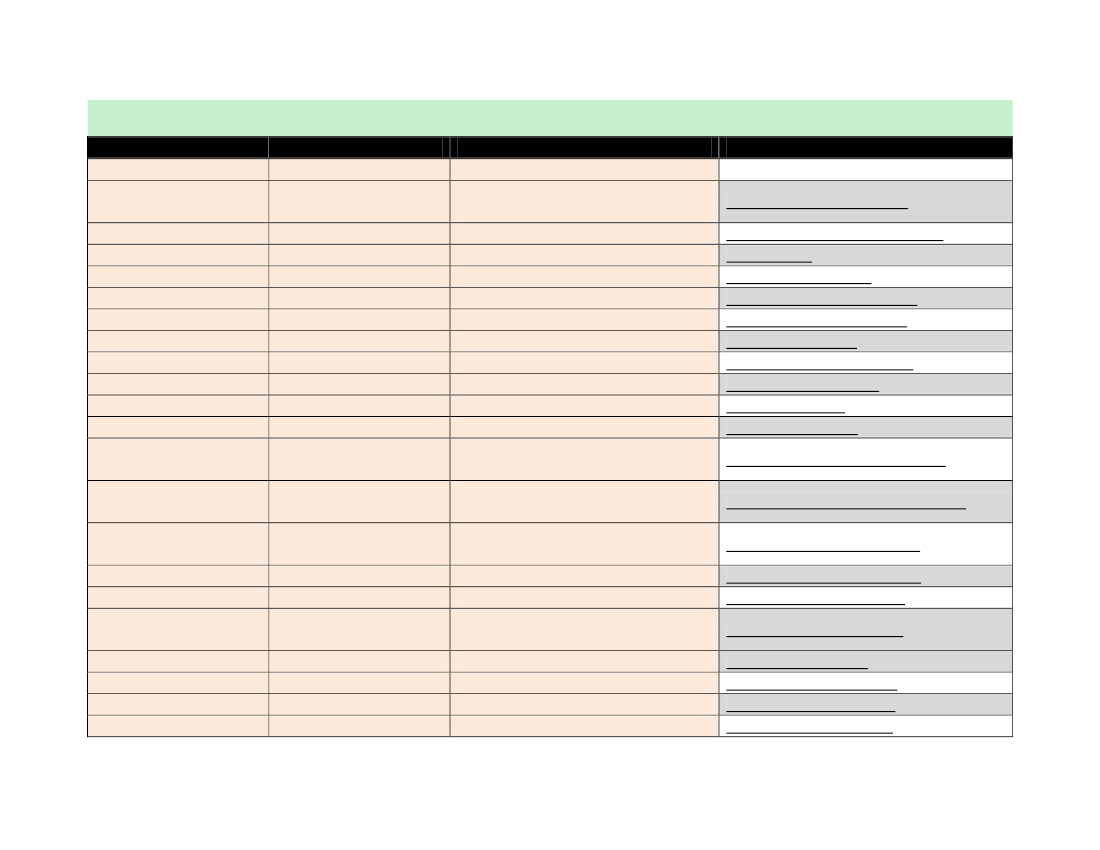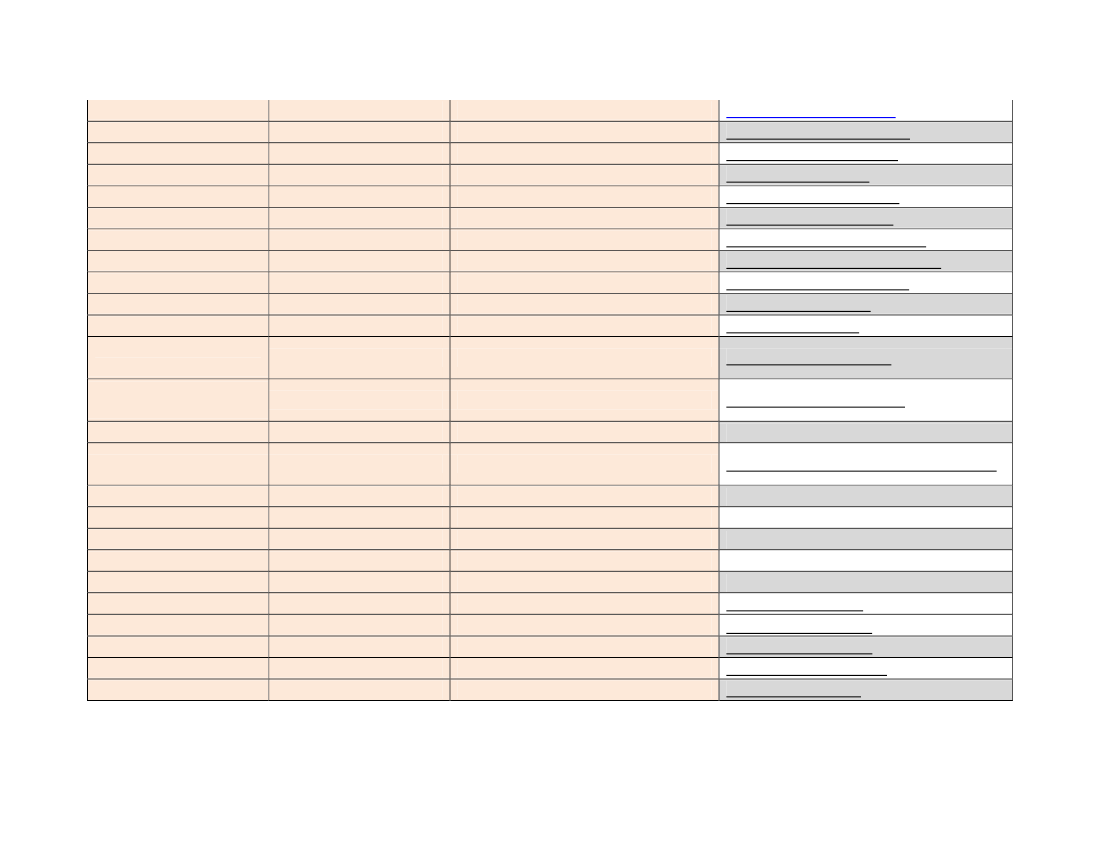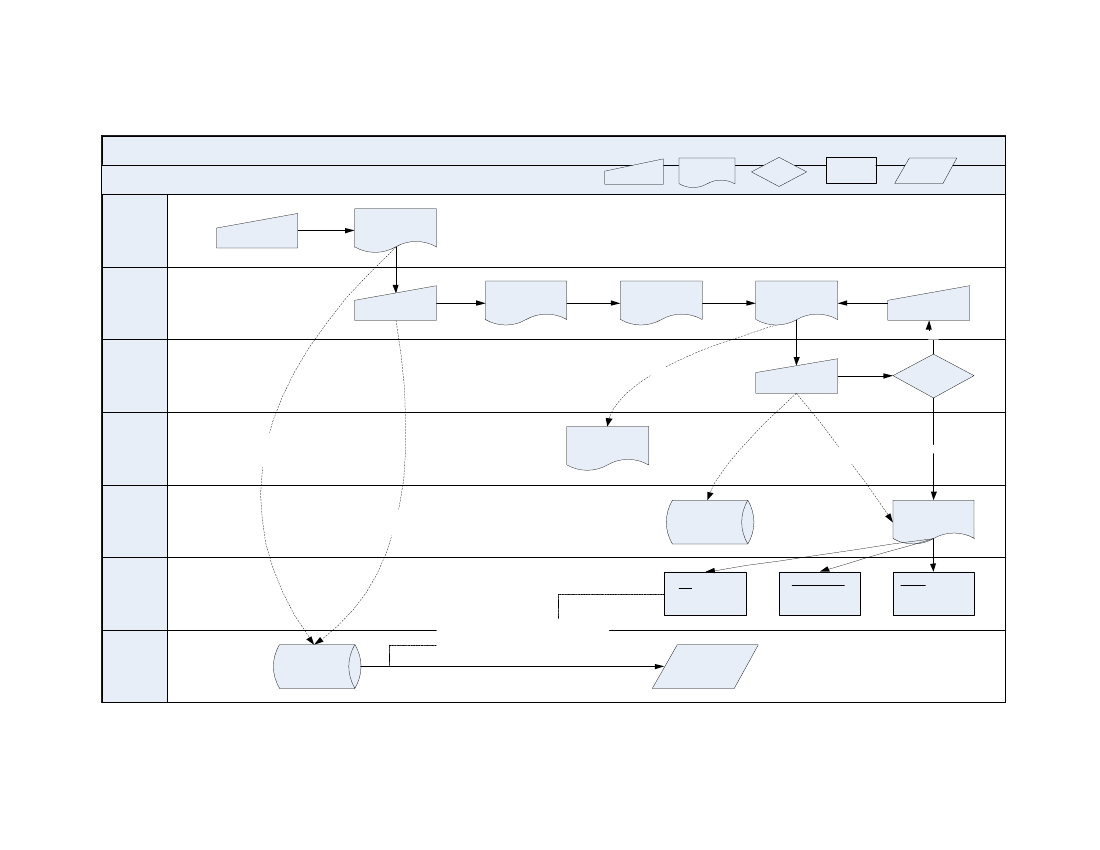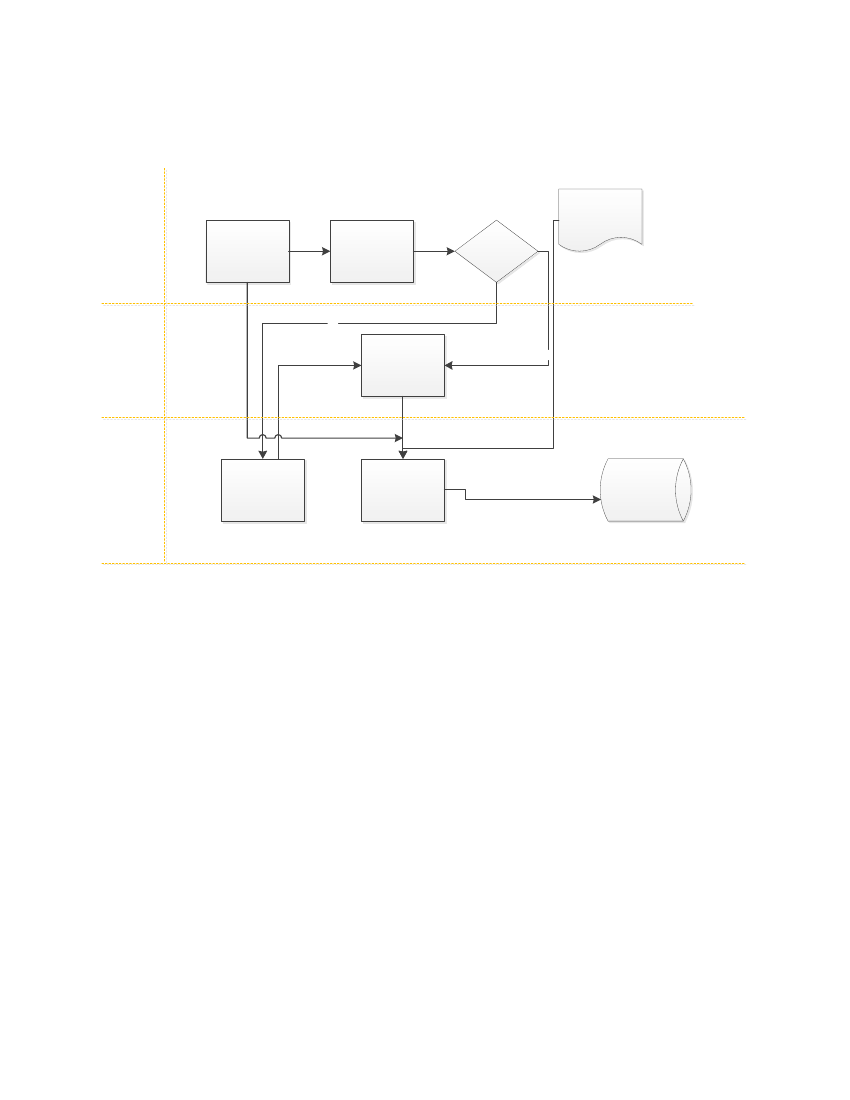Udenrigsudvalget 2012-13
URU Alm.del Bilag 215
Offentligt
Law and Order Trust Fundfor AfghanistanManagement Review15 December 2012
Table of ContentsExecutive Summary....................................................................................................................................... 1Introduction .................................................................................................................................................. 5Background ............................................................................................................................................... 5General Assessment.................................................................................................................................. 7Recommendation:................................................................................................................................. 7Governance ................................................................................................................................................... 8Government Ownership ........................................................................................................................... 8Recommendation.................................................................................................................................. 9LOTFA as part of MOI Vision and Institution Building .............................................................................. 9Recommendations: ............................................................................................................................... 9Role of the Steering Committee ............................................................................................................ 10Recommendations: ............................................................................................................................. 11Conversion of LOTFA into a Multi-Partner Trust Fund ........................................................................... 11Recommendations: ............................................................................................................................. 14Operational Management .......................................................................................................................... 15External Audit ......................................................................................................................................... 15Recommendations: ............................................................................................................................. 15Monitoring Agent .................................................................................................................................... 16Recommendation:............................................................................................................................... 16Reimbursement Procedure ..................................................................................................................... 17Recommendations: ............................................................................................................................. 18Procurement without Professionals – High Risk of Fraud ...................................................................... 19Recommendations: ............................................................................................................................. 19Further Action by UNDP Country Office ................................................................................................. 19Recommendations: ............................................................................................................................. 20Further Action by UNDP Headquarters................................................................................................... 21Recommendations .............................................................................................................................. 21Payroll Payment Process and IT Systems .................................................................................................... 21Payroll Payment Process ......................................................................................................................... 22Weaknesses in Payroll Process ............................................................................................................... 23Recommendations: ............................................................................................................................. 24Information Technology Management and Environment ...................................................................... 25Weaknesses of IT System Management ................................................................................................. 26Weaknesses in Software ......................................................................................................................... 27ii
Recommendations: ............................................................................................................................. 28Conclusion ................................................................................................................................................... 29Table of Recommendations and Responsibilities for Action ...................................................................... 30Annexes ....................................................................................................................................................... 32Annex 1 – LOTFA Management Review Terms of Reference ................................................................. 33Annex 2 – LOTFA Management Review Mission - Persons Met ............................................................. 36Annex 3 – LOTFA Contributions Received by Year and Phase & Expendituers by Major Outputs .... 39-41Annex 4 – LOTFA Steering Committee – Draft Terms of Reference ....................................................... 42Annex 5 – LOTFA Procurement – Risky Business for Amateurs .............................................................. 43Annex 6 – Police Salary Payment Process at the Provincial Level .......................................................... 48Annex 7 – Registration of New Recruits in EPS ....................................................................................... 49Annex 8 – Development of the Electronic Payroll System (EPS)/Web-based EPS.................................. 50Annex 9 - System Development Life Cycle.............................................................................................. 51
iii
Executive Summary1. At the request of UNDP senior management, a Management Review Team (MRT)1was in Kabul from4 to 20 November 2012 to review the management arrangements of the Law and Order Trust Fundfor Afghanistan (LOTFA). Starting in 2002, LOTFA has mobilized and delivered about $2.5 billion tosupport the Ministry of Interior (MOI) establish a professional Afghan police force, through six short-phased (15-30 months) programmes. Next to the World Bank managed Afghanistan ReconstructionTrust Fund (ARTF), LOTFA is the second largest provider of on-budget police and related securitysector salary (excluding military) through the Ministry of Finance (MOF).2. The MRT considered how the UNDP and LOTFA management and operations arrangements couldhave contributed to mismanagement and procurement fraud and what actions UNDP should take tomanage the risk and potential impact of such problems in the future. The MRT, which has a forwardlooking focus, examined areas where changes should be considered in the way LOTFA is organizedand operates, how it fits within the context of other ongoing efforts to strengthen Ministry of theInterior (MOI) and Afghan National Police (ANP), and the role of UNDP to make for a more effectiveprogramme of support to MOI. The MRT received very good cooperation from the UNDP CountryOffice (Country Office), LOTFA project staff, MOI staff, partners and other stakeholders.3. The fact that procurement fraud occurred and continued undetected for so long was only possibledue to the failure of UNDP management, in particular the Country Office, to provide the necessaryoversight, guidance, support and quality assurance to the LOTFA project and staff. While the MRTfocused on LOTFA, it seems likely that these management weaknesses would also affect other UNDPprojects as well. Significant improvement in the quality of UNDP Country Office management andsupport to projects is central to any solution to the current problem and management of futurerisks.4. By the time the MRT arrived in Kabul, UNDP had taken important steps to strengthen LOTFA projectmanagement. These steps included: formal investigation of the fraud allegations, with suspensionor termination of the staff involved; appointment of a new Country Director with considerable post-conflict operations experience; recruitment of a highly-qualified acting Project Manager; initiation ofthe process to more than triple national and international project staff; special support in the areaof procurement; creation of an Oversight and Compliance Unit in the Country Office; initialdevelopment of internal standard operating procedures (SOPs) for key processes; and MRTrecruitment.5. National ownership is fundamental for the effectiveness and sustainability of a crucial programmelike LOFTA. The MRT found a surprisingly low level of MOI ownership of LOTFA. MOI’s principalinterest appears to be for payment of salaries and related expenses, for which LOTFA is seen as anexternal body operating relatively satisfactorily. LOTFA is not seen by MOI as a strategic instrumentfor development of the MOI or the ANP. If LOTFA is to serve as such an instrument, it must operateas part of a broader international strategy for the MOI, owned by the MOI. To this end, it will need
1
The Management Review Team comprised: Bisrat Aklilu, Samsor Alam, Charles Downs, Peter Jensen,Nicholas Krafft, Rafiodin Malikzay, and Rohina Samim.
to be seen as a support unit within MOI, reporting to MOI, rather than, as at present, a UNDP unitoutside MOI that reports to UNDP.6. It is also important that LOTFA operations fit within a broader strategy for the strengthening MOIand ANP. To be clear, this does not refer to a LOTFA strategy but rather to a strategy of theGovernment of Afghanistan (GoA) and the international community, such as is now being developedunder the umbrella of the International Police Coordination Board (IPCB). UNDP is and will be oneof several partners to provide support to MOI and ANP. UNDP should actively engage in therelevant IPCB working groups, including LOTFA staff when appropriate. The vision statement andimplementation plan for MOI produced by the IPCB should be available around March 2013. LOTFAVII, currently under preparation, needs to be designed around this so that future LOTFA institutionbuilding takes place within an agreed “whole” strategy for MOI rather than being an isolated effortthat has little MOI buy-in and ownership.7. The existence of a comprehensive MOI strategy drawn up by the IPCB will help overcome some ofthe limitations imposed to-date by the short-term perspective of the “phased” approach appliedthus far to LOTFA. Such a strategy should provide longer-term perspective on support, including aplan for handover of LOTFA payroll support activities to GoA.8. UNDP appears to be somewhat uncomfortable with provision of the LOTFA payroll support function,without simultaneously accompanying it with other “capacity development” activities. GivenLOTFA’s crucial role in the proper functioning of the national police force, it is critically importantthat the payroll services are provided well with clear dedicated management and resources. SinceUNDP appears to be interested to continue and strengthen the payroll function, it should maintain adedicated project team for this specific purpose, not burdened with other responsibilities.9. To gain MOI ownership and to enhance the development impact of funds channeled to MOI byopening up implementation to whichever entity has comparative advantage in a particular topic; theMRT recommends that the trust fund management aspect of LOTFA (receipt and fiduciarymanagement of funds from partner; allocation and distribution to implementing entities) should beseparated from project implementation. A Multi-Partner Trust Fund (MPTF) should be established,similar to the World Bank-managed Afghanistan Reconstruction Trust Fund (ARTF) and to UnitedNations MPTFs in many other countries, administered by the UNDP MPTF Office. The proposedLOTFA MPTF would be open to proposals from a wider range of possible implementing organizationsand have a government-UN-partner Steering Committee to interpret the broader strategy, decideon allocations of funds to projects and implementing entities, and monitor progress. MPTFs providea higher standard of transparency in public on-line financial and narrative reporting.10. The role of the existing Steering Committee needs to be radically changed from one that is swampedwith voluminous reports and acts more as an “advisory body” to one that sets policy, is involved indiscussion of issues, and takes decisions. This enhanced role will become all the more importantwhen the Steering Committee, or a sub-group of the Steering Committee, takes decisions on whatprojects to fund and what not to fund. Lessons should be drawn from the successful ARTF.11. Conversion to the LOTFA MPTF should allow the IPCB’s findings to be fully taken on board and becarried out in a way that does not negatively affect current project implementation. The key actionsto develop the MPTF infrastructure do not involve LOTFA project staff and can take placeconcurrently with continuing project actions over a period of transition. Someone (e.g. UNDP MPTF2
Office) with appropriate MPTF experience should assist the parties to understand the process andagree on the basic infrastructure. This recommendation should be discussed and agreed with theSteering Committee.12. Current Phase VI should be extended for a minimum of three months to enable design of LOTFA VIIto be based on the strategic framework being developed by the IPCB in the first months of 2013.This will also enable LOTFA MPTF preparations to move forward without being unduly rushed.13. Transparency in overall operations and particularly in procurement actions should be greatlyincreased. This will minimize the chance of future fraud and improve the competitive results to beobtained from the procurement processes. UNDP should ensure that all procurement requirements(NIM and DIM) are widely circulated, including posting on the UNDP and government procurementwebpages as well as in the commercial press. The procurement results should be similarly posted,including awardee, number of bidders and disqualified bids.14. UNDP should ensure that there is written agreement with government (MOI and MOF) and partnersregarding the specific basis for reimbursement of MOI expenditures: account codes to bereimbursed and shares to be covered by government, LOTFA and possibly other sources. LOTFAshould develop an agreed Table of Concepts and the Corresponding Objects of Expenditure, whichshall be the basis for Monitoring Agent review and determination of eligibility for reimbursement.The table should be agreed in writing among LOTFA, MOI and MOF; it should be presented forinformation to the LOTFA Steering Committee and referred in specific partner contributionagreements. The table should be kept current, amended in writing when appropriate, andreconfirmed at least annually. The various MOI and MOF IT systems and administrative workprocedures should be adapted to record the specific Objects of Expenditure.15. The Monitoring Agent (MA) has played an important role to reduce the risk of accidental orintentional mis-payment of salary and related funds, including reduction in the frequency ofduplicate payments. LOTFA should make better use of the MA, encouraging reporting to MOI andthe Steering Committee regarding trends and issues identified, etc. The MA should certify theamount of each quarterly reimbursement request eligible as the basis for payment each quarter.The MA should address greater attention to salary payments made outside the banking system (e.g.,through “trusted agents” and M-Paisa) as well as to salary payments in inaccessible areas.16. The MA has consistently found that many expenditures for foodstuff lack the proper contract-related documentation. LOTFA should only reimburse those expenditures which are fully eligibleand properly documented. Those expenses which are not properly documented when submittedshould be deducted from the quarterly MOF request. The MRT recommends that properdocumentation received prior to the next quarterly reimbursement request be considered forpayment of pending expenditures, but that any expenditure is permanently excluded if it has notbeen fully documented and become fully eligible by the next quarter after the original request. Sucha change will be an incentive for MOI to improve its administrative performance.17. MOI should have a single authoritative Human Resources database, linked to the payment system.LOTFA should ensure the further development of the internal systems used for payment (electronicpayment system (EPS), etc.) to obtain the flexibility, security and possibility for effective integrationwith the Afghan Human Resources Information Management System (AHRIMS). On behalf of MOI,LOTFA should ensure the integration of the AHRIMS, EPS and other relevant IT systems to manage3
and pay MOI/ANP and Central Prisons Department (CPD) personnel. It should recruit a professionalIT firm to review the current IT systems, design an end-to-end payroll system fully integrated withthe HR and Finance systems, building on but not limited to the current EPS and AHRIMS systems.18. The MOI IT function should be professionalized to ensure the most useful IT system results andminimize the costs and limitations inherent in compartmentalized systems development supportedby individual partners. MOI should develop a high-level IT Steering Committee to prioritize, overseeand coordinate IT initiatives, to ensure that all departments and partners cooperate in the design,development and rollout of IT systems, prevent duplication of efforts and share resources. LOTFAshould develop a plan with a time-table for the eventual transfer of the systems under its custody tofull MOI responsibility, with on-going LOTFA support as may be required by MOI.19. Audit should be used more effectively as a management and control instrument. The 2012 externalaudit of the LOTFA project should apply the fraud standard for audit of LOTFA procurement. Theaudit should focus particular attention on the MOI food procurement process, and providemanagement comments on the quality and risks in the process, the cause and significance offrequently missing documentation requested the MA, and recommendations as to how the foodprocurement process might be improved for greater effectiveness, transparency and accountability.20. A management audit of LOTFA procedures and practices should be conducted during the firstquarter 2013 to identify the status of institutionalization of appropriate LOTFA managementprocesses and areas in which further work is required, in particular in areas related to assetmanagement, procurement, finance, and reporting.21. Given that it was a failure of UNDP management that created the conditions for LOTFAmismanagement and procurement fraud, UNDP should avoid the tendency for the pendulum toswing toward excessive control. UNDP should strengthen the quality of its services to projects andensure that project staff have the expertise, knowledge and SOPs necessary to provide the servicesexpected of them. The Country Office should conduct a Client Satisfaction Survey to serve as abaseline and guide for strengthening services. In conjunction with the Project Managers, theCountry Office should review processes between the Country Office and projects for which SOPs andService Level Agreements (SLAs) would be beneficial and develop them.22. LOTFA will always face multiple risks – financial and operational – exaggerated by the broadercontext of transitional Afghanistan, with continuing security uncertainty, the prevailing challenge ofcorruption, and technological limitations, among other factors. LOTFA was established to mitigatethose risks and it has done so to a significant extent. Much remains to be done. Systems have beenestablished to effect payment, but they are fragile and open to abuse. All of the partners withwhom the MRT met expressed awareness of those risks and of the impossibility of eliminating them.Furthermore, all agreed with the MRT perspective that on-going efforts will continue to reducethose risks over time. UNDP and the many LOTFA stakeholders should formally recognize that risksare real and that they are shared, as long as each party – MOI, LOTFA, UNDP, Steering Committee –does its best to minimize or manage risks over which it has any control. The MRT is convinced thatthe recommendations contained herein, when implemented, will provide a more effectivemanagement platform from which to manage the still significant risks while continuing the criticalsupport to development of MOI and ANP.
4
Introduction23. At the request of senior UNDP Management, a Management Review Team (MRT) was recruited toundertake a forward looking review of the overall management and operations of the Law andOrder Trust Fund for Afghanistan (LOTFA), in light of the allegations of LOTFA mismanagement andprocurement fraud (Annex 1, MRT Terms of Reference). During the period 4-20 November, the MRTworked in Kabul to examine key aspects of LOTFA management, including: overall governance,management controls regarding LOTFA operations; payroll management process; and systemsrelated to payroll management. The MRT was well received by LOTFA, UNDP, and partners fundingLOTFA, and benefited from open and frank interviews with a wide range of stakeholders (Annex 2).24. The MRT did not conduct its own investigation of mismanagement and the alleged procurementfraud whose exposure precipitated the crisis that eventually led to the fielding of the mission. TheMRT’s understanding is that some project staff abused their positions and colluded with vendors todetermine the outcome and inflated the cost of procurement exercises over a period of severalyears. This was made possible and exacerbated by serious management failure and lack of oversightfrom the UNDP Country Office.25. The MRT sought to respond to several related concerns.How did existing management control systems allow procurement fraud to continue for so longwithout detection?Did the procurement fraud affect the core LOTFA function of salary payment?How confident should one be that LOTFA funds are being used for intended purpose?What can UNDP do to increase the level of confidence that funds are being used for theirintended purpose?
Background26. LOTFA was established in 2002 as a mechanism through which partners could provide financing toensure that the Afghan National Police (ANP) would be paid, with actual payment to take place on-budget with reimbursement from UNDP to the MOF of eligible expenditures for salary and relatedsupport. Over time LOTFA has been increasingly charged to minimize leakage and ensure that onlybona fide police are paid, leading to increased attention to the need for accurate employmentrecords and a tamper-proof payment systems.27. LOTFA is approaching the conclusion of its sixth Phase of activity over a ten year (2002-2012) period.What began as a small $20 million project in the first phase has cumulatively disbursed about $2.5billion, with more than $650 million annually in the current phase. This has occurred without theframework of a comprehensive development strategy for LOTFA support to MOI and ANP. (SeeAnnex 3 for Contributions by Year and Phase and Annual Expenditure by Major Outputs.)28. The outlines within which a comprehensive strategy may be developed have been provided byagreements at the Kabul and Bonn Conferences, the NATO Chicago Conference, and the Tokyodonor Conference, which have established key calendar transition benchmarks in 2014, 2017 and2024 for the development of the national police capacity and international support. Building onKabul, the Bonn Conference provided a framework of firm mutual commitments for a long-term5
partnership between the Government of Afghanistan and international partners. The objective wasto assist Afghanistan achieve sustainable growth and development and fiscal sustainability throughthe ‘Transformation Decade’ (2014-2024). It was expected that as the Afghan economy and fiscalrevenues grow the government would assume increasing financial responsibility, and that “no laterthan 2024, Afghanistan would assume full financial responsibility for its own security forces”.29. Tokyo went further recognizing very clearly that Afghanistan will not be able to meet its fiscalobligations (from domestic revenues) over coming years without substantial assistance frompartners. At the Conference, the International Community committed to “directing financialsupport towards Afghanistan’s development through the ‘Transformation Decade’. In this context,the International Community committed to providing over $16 billion through 2015, and sustainingsupport, through 2017 at or near levels of the past decade to respond to the estimated fiscal gap”.2In short, there is a firm commitment from partners to continue to support the budget and thesecurity forces albeit with a declining proportion of the funds coming from partners over time. Thisis important when considering future interventions through LOTFA as a further series of shortinterventions or a more sustained commitment where goals can be more ambitious.30. Until the reports of alleged mismanagement and corruption broke in the press in May 2012, LOTFAwas considered to be a highly successful and well-run UNDP operation. Once questions arose,serious weaknesses became immediately apparent.31. UNDP took several important steps in the months between the public disclosure of the allegedmismanagement and the arrival of the MRT. These included, among others:
Investigation of the facts byOffice of Audit and Investigations (OAI)-Investigations,with finalreport expected soon.Firing of short term personnel and administrative leave for regular staff apparently involved,pending resolution of the investigation.Appointment of a new Country Director and review of the structure and staffing of the CountryOffice, which has already led to the recruitment of new Country Office managers.Review of LOTFA’s structure and staffing, resulting in a decision to more than triple the numberof national and international staff. Increases were particularly high for staffing of Pillars II and IIIand general operations support.Development of new Request for Proposals (RFP) for Monitoring Agent services.Use of special surge support in area of procurement to ensure pending processes move aheadcorrectly.Steps toward establishment of a new Oversight and Compliance Unit within the UNDP CountryOffice.Development of Standard Operating Procedures (SOPs) for internal operations and forinteraction between the project and the Country Office.Organization of the Management Review mission.
2
See communiqués from Chicago Summit dated 21 May 2012, and the Tokyo Conference dated July 8, 2012.
6
General Assessment32. Procurement fraud within LOTFA could only have occurred for such an extended period of time dueto serious management failures in exercising proper oversight and support on the part of UNDP.The UNDP Country Office failed to ensure that its project and project staff had the necessaryexpertise and work processes to fulfill their responsibilities. There was no LOTFA staff member withprocurement expertise for most of the period of concern, even though project staff were conductingprocurement. When the project requested recruitment of a national procurement staff member, itwas reportedly blocked by the Country Director. There was no project/country procurementhandbook and SOPs to guide staff unfamiliar with UNDP procedures.33. In general, the Country Office took the position that LOTFA was operating under the NationalImplementation Modality (NIM), with the MOI responsible for overall achievement of the results,and therefore UNDP was not responsible for procurement. No support was provided by the SupplyChain Management Section to ensure project staff knew how to correctly conduct procurement.The Programme Section did not ensure that procurement was properly planned and conducted. TheCountry Office stated that LOTFA conducted procurement on a “hybrid” basis involving NIM andDirect Implementation Modality (DIM) – as if specific procedures had been adopted drawing on thebest of UNDP and Government procedures – when in fact the project followed neither UNDP norGovernment procedures and acted in a manner to avoid oversight. This was a management failuredriven from the top leadership of the Country Office and carried out by each of the responsiblesections that did not act to ensure that appropriate staff were in place to fulfill projectresponsibilities, that the staff knew what to do and that they were operating according to correctprocedures applied with the appropriate quality.34. Significant leakage of payroll funds (ghost workers, partial salary payments, etc.) is a seriousfiduciary risk. Given the hundreds of millions of dollars directed at salaries each year, a smallleakage could theoretically have resulted in the loss of tens of millions of dollars of partnercontributions. Even so, if handled professionally by LOTFA, this would have constituted less of areputational risk for UNDP than would result from mismanagement by UNDP project staff of even arelatively small amount of funding (under 1% in this case). The first situation would havedemonstrated the need for the LOTFA mechanism, while the second damages the reputation ofUNDP and thus undermine to the soundness of the UNDP-managed mechanism. While it is veryimportant to note that appropriate actions began to be taken by UNDP when the allegations cameto light, there was still an unfortunate tendency to minimize the problem as “involving only a smallamount of funds.” The central question was not the amount but rather implications andresponsibility.35. Fortunately, the procurement fraud does not appear to have had any effect on the police payrollpayment process. This is due primarily to the fact that the payroll process is not in any waydependent upon LOTFA procurement actions.Recommendation:To prevent such fraud from again arising and remaining undetected for long, UNDP at thehighest corporate level should unequivocally communicate that UNDP is responsible to7
ensure that its country offices and projects have staff with the appropriate expertise,guidelines and SOPs to conduct the work expected of them. This implies that country officesare responsible to provide training and support, ensure that SOPs are developed, andmonitor their application, so that project staff can work effectively, regardless ofimplementation modality. This should be communicated through the Regional Bureau andbecome part of the expectations and performance review criteria for Country Directors andCountry Office staff.
GovernanceGovernment Ownership36. The MRT had only one meeting with a senior official of the MOI – the Deputy Minister,Administration, who is also the LOTFA National Director. There was no MOI presence at either theMRT’s inception meeting with the LOTFA Steering Committee, which is co-chaired by the MOI, or atthe round up meeting again with the Steering Committee that was attended by nearly all partnersand other stakeholders. The MRT finds that there is remarkably little sense of ownership of LOTFAwithin MOI. The MRT was however pleased that the MOF participated in the round-up meeting andpresented the GoA’s positions with clarity.37. LOTFA has not been perceived as a support unit within MOI. LOTFA staff are UNDP staff; they reportfirst and foremost to UNDP (a view also held by the UNDP Country Office). Although the LOTFA VIProject Document clearly details and contains an organigram that shows the LOTFA ProjectCoordinator/Chief Technical Advisor, who manages the full range of LOTFA operations, reporting tothe Deputy Minister/National Director. This is however not how it is perceived within UNDP or theMOI. Given this, it is difficult for senior MOI management to perceive LOFTA as truly belonging tothem, an essential ingredient in ownership. Without enhanced ownership, LOTFA will remain a unitexternal to the MOI, with little substantive impact on the long-term development and performanceof the Ministry.38. When LOTFA started in 2002, its essential purpose was to pay police salaries. This has almost nodevelopmental impact, although improved security is a critical prerequisite to delivery ofdevelopment services and it was crucially important to demonstrate good governance and assurepartners that their funds are being used as intended. As such, it made sense that LOTFA should fallunder the Deputy Minister for Administration and Finance. Indeed it may still be best for the salaryand benefits component of LOTFA (Pillar I) to fall under Administration. But LOTFA has changedover time and now seeks to address substantive issues of institutional capacity and developmentthat cut across the full MOI mandate. These components in Pillars II and III as of Phase VI are, inmost respects, quite separate from Pillar I. They represent line items in what would normally be arelatively small institution-building project (of some $20 million but with a slow implementationrate). The MOI appears to be interested only in the payment of its police salaries and benefits withlittle interest in the capacity building components supported by LOTFA in their present design.3
3
It was not part of the terms of reference of the MRT to determine the impact of these Pillars II and III. Suffice it to say, thatthe consensus seems to be that, apart from the hiring of some 1,300 female police officers out of a total of 140,000 (itself avery significant contribution), the developmental impact of these Pillars appears to have been small to insignificant.
8
Recommendation39. As the International Police Coordination Board (IPCB) clarifies the MOI vision, implementationstrategy, and the role of the many partners in supporting the MOI, it may make sense to shiftresponsibility of Pillars II and III to the parts of the Ministry that address such capacity buildingprogrammes. This may help with building ownership within the MOI.
LOTFA as part of MOI Vision and Institution Building40. Part of the problem is that Pillars II and III have been developed in the absence of any vision of:what the Ministry is setting out to achieve,an agreed strategy to move forward,a longer-term implementation plan, andreal regard for what other partners are doing in the Ministry. (One partner for example,commented to the MRT that they were reluctant to support LOTFA since its institutionalobjectives seem to be inconsistent and/or duplicative of their efforts.)
41. Fortunately, following the May 2012 NATO Chicago Conference, it was agreed that the IPCB wouldbe reinvigorated and empowered with developing a vision for the MOI – a conceptual framework forpolicing in Afghanistan that puts less emphasis on ANP being an adjunct to the Afghan NationalArmy (ANA) and more on civilian policing. It aims to bring the many independent threads together(there are multiple partners and partners working with the MOI – more often than not withoutcoherence of effort) in readiness for transition at the end of 2014. LOTFA has allocated $5-8 millionto help IPCB develop this strategy and move it forward with a surge of effort between now and theend of 2013. Four working groups have been established by IPCB: ANP professionalization; police-justice linkages; MOI reform; and the Ministerial Working Group. Major outputs of these groups arelikely to be ready in first quarter 2013.42. For LOTFA to have an impact as part of an integrated effort to develop the MOI into an effectivecivilian police force – rather than be a small capacity building effort that is not linked to a biggerwhole – it is imperative that it play a key role in assisting to develop the vision and implementationstrategy to be laid out by the IPCB. Since the IPCB will lay out the future of the MOI, activeparticipation in the four IPCB working groups is important for UNDP and for LOTFA.43. The current timing of LOTFA VII is not ideal. As of now, the draft LOTFA VII project document has tobe completed by January 2013 so that implementation can start on April 1, 2013. On the currentschedule, the LOTFA VII project concept would be completed before IPCB has laid out an agreedvision and implementation strategy for the Ministry. This will likely make it impossible to agree toinstitution-building components for the MOI that are agreed by MOI and stakeholders and makereal sense in terms of the “whole”.Recommendations:The UNDP Country Director or a senior Country Office manager should lead UNDPparticipation in the IPCB and its working groups, along with relevant LOTFA project staff.LOTFA support under Pillars II and III should be designed around the work of the IPCB, takinginto account the efforts of other partners.9
The start of LOTFA VII should be delayed for at least three months to put preparation on aschedule that fits with timing of the IPCB work.
Role of the Steering Committee (SC)44. Under previous LOTFA management, the SC was involved in few substantive decisions. As onepartner informed the MRT, the SC was kept involved with a “tsunami of impenetrable reports”. Pastreports submitted by LOTFA ran to great length and were silent on key issues and challenges. Areader had the impression that all was well, there were no major concerns, and if there were issues,they were hidden with oblique references that made it difficult for the reader to sort the forest fromthe trees.45. The situation of LOTFA is in marked contrast to the World Bank managed AfghanistanReconstruction Trust Fund (ARFT) or to the experience of UN Multi-Partner Trust Funds (MPTFs)administered by the MPTF Office located in UNDP. The ARTF is co-chaired by the Minister ofFinance and the World Bank Country Director. The ARTF SC sets the overall financing strategy and iskept fully informed of issues as they arise. The ARTF Monitoring Agent, the same company as forLOTFA, reports to the SC from time to time and is then intensively interrogated by members of theSC: how often do they get to the provinces, what do they find, how do they verify expenditures,what happens to ineligible items, how do they verify procurement processes etc. It is not a hostilesession but hugely informative, frequently clarifying issues in the eyes of the partners, andhighlighting to the Monitoring Agent or the Bank that something need to be done differently. In thecase of the ARTF, this interchange with partners led the Bank to appoint a Supervising Agent tophysically verify the construction of assets: did they exist where they were meant to be, with whatquality, and what lessons could be drawn from findings. Such discussions with the LOTFA MA mighthave engendered an enlightening discussion on ghost workers and what can and is being done tominimize the number of such workers.46. The MRT considered three options for the SC which need further discussion with the SC:An umbrella SC for the ARTF and LOTFA. This would emphasize the development nature of thepolice force and perhaps help shift the MOI more toward civilian policing (away from an ANAsupport role). The ARTF works well and deals effectively, under the Minister of Finance, withpolicy and decision-making. This arrangement would put the two trust funds under one roof(while keeping the funds separate). A further advantage is that it would highlight the level ofrecurrent cost funding to Government; between them, the ARTF and LOTFA provide about $1billion a year, some 30% of Government’s total recurrent expenditures. As agreed in Chicagoand Tokyo, there needs to be a plan to phase that proportion down over time; the ARTF SC, withits focus on economic management, might be a good vehicle to do so.4A disadvantage is thatmembers of the ARTF tend to be heads of development agencies while the composition ofLOTFA’s SC is different – often more military and more embassy. Furthermore, the agendas ofboth the ARTF and LOTFA, particularly in this period of change for LOTFA are very charged.
4
The MRT met with the Deputy Minister of Finance and the Director General, Budget in MOF. Because of the very large sumsof money involved in paying police, the use of on-budget mechanisms, issues with procurement of foodstuffs (where there isample room for abuse), and their experience with the ARTF, the Ministry of Finance is interested in playing a much strongerrole in the SC and LOTFA going forward. They would also be keen to co-chair meetings. The MRT actively supports anenhanced role for the MOF and recommends this be discussed with MOI and the LOTFA SC.
10
A high level umbrella SC that will oversee both LOTFA (ANP) and ANA. This second option whichappears to be under consideration would be a very high level Oversight Committee for theAfghan National Security Forces (ANSF) covering both the ANP and ANA, but with a lower levelSC much like the current SC having major responsibility for LOTFA.A third option would be leaving the SC much as it is but have a very close link (semi merging)with the IPCB. LOTFA would effectively become akin to an operating arm of the IPCB oninstitutional development. This would make LOTFA central to the overall transformation of MOIand would help build ownership and credibility.
47. All three options are predicated on a much stronger role for the MOI. Without this, efforts to makethe SC and LOTFA effective vehicles for development, will most likely fail.Recommendations:The SC should be the key policy and decision making body – it should be setting policy,alerted early to concerns for consideration, and deciding on issues that are presented to itby LOTFA and deciding on what is funded by LOTFA and who should implement theactivities. It needs to be chaired by a very senior official from the MOI. It will need to besupported, as it has been in recent months, by a subgroup of partners and LOTFA that meetson a more regular basis – akin to the ARTF Financing Group. It should be supported by asmall Technical Secretariat which is not involved in implementation.The Monitoring Agent should be asked to present regularly to the SC.Another discussion that should take place soon with the SC is an early presentation of thecontent of LOTFA VII and how it fits with work being done by the IPCB. The chair of the IPCBshould be invited to this discussion (or her representative). This would enhance buy-in frompartners and the MOI.In short, the role of the SC needs to change to one of policy setting, discussion of key issues,and decision-making. This change in role for the SC will become all the more important ifLOTFA moves to a MPTF model where LOTFA funds projects that are approved by the SC.A draft LOTFA Steering Committee Terms of Reference is attached as Annex 4.
Conversion of LOTFA into a Multi-Partner Trust Fund48. Although called a “trust fund”, LOTFA is actually a third-party cost sharing project. The fact that ithas never been a trust fund has contributed to the less-than-optimum management arrangementsthat currently exist.5Compared to the current standard arrangements for Multi-Partner Trust Funds(MPTFs), LOTFA does not have the same rigour of fund management, financial reporting and publictransparency; the Steering Committee does not exercise authority over the fund strategy andallocations; funds are managed by the same party which implements projects; and it does notinclude other UN or non-UN partner agencies, and the public transparency of LOTFA’s finances andoperations is less than desirable, amongst other features. The MRT believes that a continuation ofLOTFA in its present form will likely lead to UNDP/LOTFA playing an increasingly marginal role in thetransformation of MOI into a sound policing institution.
5
In 2004, at the beginning of Phase II, the decision was taken to separate the “Law and Order Trust Fund” from the “SupportProject for the Rule of Law.” Although the problems resulting from fusing the two together was recognized, the separation wasnot carried through and the problems have continued to this day.
11
49. The MRT is of the view that UNDP should aim to support MOI using a MPTF model akin to the ARTFmanaged by the World Bank. Under this approach UNDP would differentiate services to LOTFA as (i)fund administrator, (ii) Technical Secretariat, and (iii) programme implementing partner for salarypayments (Pillar I) and potential programme implementing partner, along with other organizations,for institutional and capacity building programmes (under Pillars II and III), based on a review of thesoundness of its proposal and its delivery capacity.50. UNDP would continue to manage salary payments,6but as explained above implement other LOTFAprojects or project components upon review of its proposal, along with potential proposals fromother organizations, and approval by the Steering Committee. LOTFA would thus cease to be animplementing agency and would become a funding mechanism akin to the ARTF, which does notimplement any projects. The LOTFA Trust Fund Secretariat would support the Steering Committeeto fulfill its strengthened decision-making responsibilities by receiving, vetting (or organizing thevetting of proposal) from UNDP and other UN agencies Proposal approval would rest with the SCchaired by the MOI – a key factor in growing MOI ownership. Once approved, proposals would befunded by LOTFA from the trust fund. For example, UNFPA might propose and implement a projecton gender within MOI. UNDP might undertake capacity building. EUPOL might receive funding todo police training and sponsor MOI staff to visit other police forces. This would spreadimplementation risk – rather than having it all locked up within LOTFA – and would help to ensurethat the most relevant and competent entities implement the projects.51. Multi-Partner Trust Funds are generally established with a multi-tier governance structure thatpromotes strong National and UN inter-agency coordination, including peer and technical reviews,and collaboration with national governments and contributors/partners. The UNDG organizationshave developed a generic MPTF architecture that permits quick MPTF set-up and operation. Themechanism allows appropriate flexibility in the structure, composition and operations of the MPTF-constituting bodies in response to country or situation-specific contexts. This enables the UN systemto quickly deploy available systems for the rapid mobilization of the technical, operational andadministrative capacities of the UN and the expeditious approval and implementation of projectsand programmes.52. While participating UN organizations operate under the governance and accountability frameworkof their own organization, MPTFs have the following common governance elements:The MPTF is established based upon an agreed strategy framework (agreed by governments,partners and participating UN agencies);A policy level Steering Committee, comprising national authorities, the UN (and the World Bankwhere it is involved) and contributors/partners, as appropriate, sets fund policy according to theagreed strategy;The Steering Committee or a smaller Executive Board that makes funding allocations, comprisingnational authorities, Participating UN Organizations, and sometimes a small number ofcontributors (the two bodies are often combined in a single entity, when this is not toounwieldy);
6
Focusing on (a) building and improving the systems to support payments and (b) the transfer of this function to MOI once thesystems are operational, recognizing that this may take a minimum of 2-3 years.
12
A technical secretariat reviews programmes and projects submitted for funding, either by usingthe capacities of Participating Organizations or by establishing a stand-alone TechnicalSecretariat to service the above bodies;Partners and UN agency participation are each formalized through specific standard modelagreements used for all MPTFs.Funds are received and managed as a trust fund by one UN agency (designated theAdministrative Agent or AA) with demonstrated capacity to provide this service separately fromits other functions, with clear overall accounting and tracking of any agreed ear-marking, forwhich it receives a management fee of 1%;Multiple UN agencies access funds and conduct project activities under their own rules.
53. For LOTFA and UNDP this has several important implications:Explicit strategic framework agreement among all parties to guide allocation of funds;Clear separation (“firewall”) between management of the trust fund by the AA andmanagement of projects by UN agencies;Improved financial reporting, with current financial information available online;Need for a small technical secretariat to support the Steering Committee;Besides UNDP, other UN agencies and international partners to access funds through SteeringCommittee decision and AA transfers under Pillar II (capacity development of MOI) and Pillar III(capacity development of the national police). These agencies normally would operateaccording to their own rules and not be “under” UNDP or the AA;How UNDP organizes management of its projects is its own decision:oUNDP could decide to have an overall Project Coordinator/Chief Technical Advisor, as ithas at present, for all of its LOTFA funded projects supported by three Project Managersresponsible to manage projects under each of the three pillars. This is similar but notidentical to the present UNDP arrangement under LOTFA VI. However the UNDP ProjectCoordinator would not be responsible for the trust fund as a whole nor for the projectsof other agencies.oUNDP could decide that a project(s) under a single pillar funded by LOTFA operates withits own Project Manager without need for an overall Project Coordinator/ChiefTechnical Advisor. In this case the Project Managers can report to the UNDP CountryOffice manager responsible for the area, e.g., Rule of Law.UNDP presence on the Steering Committee should be at a senior Country Office level, preferablythe Country Director; at the working level it could be the head of the Rule of Law practice team,the head of the relevant UNDP project, or depending on the case the LOTFA fund manager.
54. LOTFA VII is only months away and it would appear to be a lot to ask LOTFA, for several yearsunderstaffed and under-supported by UNDP, to change its role so radically and so quickly. Staff withdifferent skills will need to be hired to manage a trust fund and the overall management of UNDPprojects in this area will need to be carefully reconsidered. Nonetheless the negotiation andestablishment of the MPTF framework are separate from the daily management of the currentLOTFA projects. The MRT thus recommends a period of transition, where LOTFA VII would continuewith Pillar I and current projects from Pillars II and III; while Pillars II and III would be strategicallymodified based on the vision and implementation plan under preparation by the IPCB to includefunding of additional projects as they are warranted, vetted and approved by the SteeringCommittee. New projects would not be implemented by LOTFA but could be undertaken by UNDP,13
other UN agencies, or other partners. The UNDP Multi-Partner Trust Fund Office has ampleexperience of such proposal-based approaches.55. The MRT strongly endorses the change of LOTFA to a proper MPTF model. If this proposal toconvert to a MPTF is accepted, the modalities and timeframe for the transition should be discussedand agreed with full participation of key partners in Kabul. The conversion should not jeopardizecurrent activities or management strengthening. Conversion will not be a difficult process and thekey steps can be taken even while LOTVA VI and VII are ongoing, especially as it involves peopleother than the project staff involved in daily management and implementation. LOTFA VII mightthus start with Pillars I, II and III (as modified following the contribution from the IPCB) with eitherthe addition of a new window for funding for proposal-based projects or treatment of Pillars II andIII as windows for proposal-based projects in support of the MOI and ANP, respectively. The fullconversion to a MPTF would happen on a timeframe agreed with concerned parties.56. Finally, the annual financial activity of LOTFA is comparable to the annual sum of all the trust fundshandled by UNDP’s Multi-Partner Trust Fund Office. LOTFA should have a website similar to that ofthe MPTF Office GATEWAY (http://mptf.undp.org/), to ensure clarity, public disclosure andtransparency in current financial reporting as well as to provide a central location for project levelinformation and progress reporting. In addition, the substance and layout of reports should beimproved to increase clarity and issues focus, and UNDP Country Office should provide qualityassurance to this process without delaying presentation of information to stakeholders and theinterested public generally.Recommendations:The MRT recommends that all stakeholders would be better served by converting LOTFAinto a Multi-Partner Trust Fund, a funding and management mechanism that UNDP with theUN system has developed largely since the creation of LOTFA. Some of the features andbenefits of an MPTF can and should be developed under the current LOTFA model, but theywill only be securely institutionalized with conversion of LOTFA into an MPTF.7Someone (e.g., MPTF Office staff) with operational experience of setting up and runningsuch a trust fund should visit Kabul to explain to all stakeholders how this might work andassist with its setup.Once there is agreement to convert LOTFA into an MPTF, all further contributionagreements should incorporate reference to the planned change in modality and agree thatfunds contribute to LOTFA can be transferred to the new Trust Fund once it has beenestablished. This will simplify future partner consultation for this purpose.The following measures should be taken to begin to manage LOTFA according to the best-practice experience of the Multi-Partner Trust Funds. As noted, the timeline for this shouldbe discussed and agreed by UNDP with MOI and the Steering Committee:Separate trust fund administration from programme management in the Country Office;Formally recognize the LOTFA Steering Committee as the decision-making body for allLOTFA operations;Establish Technical Secretariat mechanism independent of UNDP and that reports to theSteering Committee to review, vet and recommend actions to the Steering Committee;Adopt a broad strategy to define what types of activities are fundable under LOTFA;
7
See MPTF Office GATEWAY (http://mptf.undp.org/overview/funds) for more background.
14
Open Pillars II and III (capacity development of MOI and capacity development ofnational police) to proposals from other organizations besides UNDP;Establish a LOTFA public website that transparently displays relevant information,including: resources contributed to LOTFA; decisions made by the Steering Committee;activities funded by LOTFA; procurement processes, notices and final awards; periodicreports on progress and challenges of LOTFA operations; etc.
57. The above measures are likely to help MOI, MOF and partners see LOTFA as a key player – as afunding source – a true partner in the transformation of ANP into a viable civilian police force.LOTFA will be seen by MOI as the main source of support rather than being one of several playersinvolved in capacity building. It provides the opportunity for real MOI ownership – the kind ofownership that the MOF feels toward the ARTF.
Operational ManagementExternal Audit58. Among the initial questions identified by the MRT even before the mission travelled to Afghanistanwas why had the External Auditor not detected the alleged fraud? The MRT is not in a position todetermine whether the fraud should have been detected during the normal audit conducted in thefirst quarter of 2012, even though the External Auditor reported having applied a medium-riskstandard. However, had UNDP advised the External Auditor in late 2011 of its suspicion of fraud,the auditors would have proposed different terms of reference – application of a fraud standard –which would have been likely to detect the fraud. Such revised ToR would have involved a high levelof sampling of the set of suspect transactions, with a concomitant higher cost. UNDP is partlyresponsible for the fact that the External Auditor did not conduct their audit in a manner that wouldhave been likely to detect the suspected fraud.Recommendations:The 2012 External Audit – which includes procurement actions initiated in 2011 and 2012 –should be conducted with application of a fraud standard for procurement and for any otherfunction which the OAI Investigations determines to have been mismanaged. Since themain category of initially ineligible expenditures is for food procurement conducted by MOI,the 2012 External Audit should include a special focus on food procurement (withapplication of a fraud standard) at HQ and provincial levels, examining process, proceduresand documentation. The results of this part of the External Audit should inform the futurerole of the Monitoring Agent in this area.A thorough management audit should be conducted during the first quarter of 2013 ofLOTFA’s internal managements systems, processes and SOPs (with particular attention toasset management, procurement, finances and reporting) to determine what has beenestablished, how well they are followed in practice, and what gaps remain. This will orientfurther work and serve as a benchmark for the clean-up of the previous LOTFA managementsystems.
15
Monitoring Agent59. The role of the Monitoring Agent (MA) is to check MOI payments for salary and food againstunderlying information, including some spot checks for physical verification of police officers andfood stocks. The MA does not monitor LOTFA. It is part of the control system which LOTFA has at itsdisposal to enable it to pay only justified expenditures and to assist MOI to improve its ownadministration in the field. The MA has identified a number of incorrect payments (doublepayments to the same person; payments to people not in attendance). Such anomalies totaledabout 2% of payroll and were corrected whenever identified. In general these types of problemsonce identified have become far less frequent. The MA presence has greatly reduced the risk toUNDP and partners regarding the use of funds provided, and to a limited extent has helped improveMOI’s own administration by calling attention to problems.60. LOTFA, UNDP and MOI have not made adequate use of the MA and the information it produces(unlike the World Bank ARTF, which engages much more effectively with the same MA). LOTFAmanagement went so far as to prohibit direct contact between the MA and the MOI. For years MAreports have been treated at a low level by LOTFA and by MOI. Reports are seen only as a listing ofcases to be addressed, rather than to identify systemic points of strength and weakness within MOI.The MA reports are not presented in a manner to encourage review and understand highlights andissues, and are not discussed in that way by LOTFA, MOI, UNDP or the Steering Committee. The MAhas repeatedly noted the need for guidelines, manuals and SOPs for salary payment and foodcontracting processes. Such documents would be issued by the MOI to its staff for their guidanceregarding their own work and supervision by the monitoring agent. The guidelines would alsocollect the individual agreements regarding what specific categories and expenditure codes areallowable by MOI and reimbursable by LOTFA. All of this would be improved with greaterengagement with the MA, a process which has begun with new LOTFA staff involvement in recentmonths.61. The extent of doubt and uncertainty about the payment of police salaries is lower today than it wasfive years ago. Today, roughly 83% of police (and of public servants globally) are paid throughelectronic transfer of funds to individual bank accounts. The potential risks and abuses inherent in amanual/cash payment system have been reduced from 100% a decade ago to roughly 17% today.While it is still possible to abuse the electronic system, such abuses are easier to detect. The risks ofabuse are higher for the 17% of payments handed through “trusted agents”; the extent of abuse isunclear. The solution will come with extension of the banking system, but in the meantime thiswould be a useful area of extra attention by the MA to identify specific problems and profile theweaknesses of the system for institutional response.Recommendation:The MA should continue to monitor payments through electronic funds transfer, but at amore reduced level unless problems appear, and shift greater attention to foodprocurement and payment of salaries other than through the banking system. MA shouldbe tasked to prepare draft guidelines for issuance by MOI regarding coding and processingof salary payments.
16
The MA should focus particular attention on integrity of the process of salary paymentsthrough M-Paisa and “trusted agents.”
Reimbursement Procedure62. LOTFA reimburses the GoA on a quarterly basis for expenditure considered eligible (primarily ANPand Central Prisons Department (CPD) salary and food allowance). Reimbursement documentationis prepared after each quarter by the MOF’s Treasury Department and sent to LOTFA, which issupposed to verify the request but does not appear to do so. The Treasury Department preparedreimbursement applications are formally signed and submitted by the MOI to UNDP and then paidin full.63. According to the ToR of the Monitoring Agent, the MA should provide support to the MOF inpreparing the reimbursement applications. It is understood, however, that the MA has so far notbeen requested to support the process. Alternatively, it could be asked to certify the amount of theMOF reimbursement request which is suitable for LOTFA processing.64. The following weaknesses and problems have been identified regarding the reimbursementprocedure:While UNDP’s ToR for LOTFA (revised 2008) outlines the nature of the financial contributions(payment of salaries, training, rehabilitation, equipment, etc.), there is no formalized basis ordocumentation setting out the details regarding the expenditures which LOTFA will reimburse tothe GoA.8UNDP Afghanistan has stated that “Decisionson details such as food cost and basesalary reimbursement that LOTFA covers is agreed in the project steering committee minuteswhich constitutes an integral part of UNDP legal framework.”9However, a review of the minutesfor the meetings held from 2009 to 2012 does not provide any such specific information exceptin one case;10There is agreement that the GoA for 2012 (SY1391) funds 7.5% of salaries (seemingly onlyrelated to object codes 21102 and 21103), while the US Combined Security Transition Command– Afghanistan (CSTC-A) will provide US$ 42.75m. However, it has apparently not been formallyagreed whether the LOTFA reimbursement is based on budgeted cost (the fullTashkeelof157,000 ANP) or actual expenditure (estimated average for 2012 of 148,000 ANP) despite thishaving a significant financial implication;There is agreement that the GoA for 2012 (SY1391) covers the food allowance costs for 98,239ANP. Based on the fullTashkeelof 157,000 ANP, this would mean that LOTFA would cover 36.1%of food allowance costs up to a maximum of approximately US$ 96.8m. However, there appearsto be no formal agreement between the GoA, UNDP/LOTFA and partners as to whether the
8
The MRT was advised that the LOTFA project office in 2012 informed the Monitoring Agent that only the following objectcodes are eligible for reimbursement: 21102 (Military officers), 21103 (Armed forces), 21131 (Professional and cadre allowance,Uniformed), 21132 (Hazard or regional pay, Uniformed), and 21205 (Food for Employees, Uniformed). Object code 21133(Bonus, Uniformed) is also eligible, but has not been used in recent years since all entitlements (incentive and bonus payments)are being covered by object code 21131.9E-mail from UNDP Afghanistan to the MRT dated 12 November 2012.10At the Steering Committee meeting on 18 October 2011, a proposal to provide ANP Specialist Pay (top-ups) for the MOI CrisisResponse Unit, Air Interdiction Unit and General Directorate of Police Specialized Units was approved. However, the paymentdetails (conditions under which it applies and the amount) are not stated in the meeting minutes. Prior year minutes providesimilar incomplete information: “pay parity with ANA officers from captain and below, sergeants and patrolmen was approvedstarting from the current month.” “Decisions were taken regarding food allowances.”
17
LOTFA reimbursement should be based on budgeted cost (157,000 ANP) or actual expenditure(estimated average for 2012 of 148,000 ANP) despite this having a clear financial implication;11Food contracts constitute roughly one-fifth of the value of reimbursements paid by LOTFA toMOI. Nearly half of the value of those contracts is not fully supported by availabledocumentation at the time of the monthly MA visits. Much of the documentation is eventuallyproduced, but after many months and sometimes with suspicious results. The Deputy Minister(LOTFA National Project Director) was surprised to learn of this, and described a rigorousprocurement process with multiple checks and balances that should ensure that alldocumentation is in order.About 6% of LOTFA reimbursements during 2007/08-2011/12 (SY1386-SY1390) relate to objectcodes that are not eligible, but apparently has been deemed miscoding (based on the use of oldcodes referring to the same expenditure categories) and therefore included in thereimbursement applications.12This has also been noted by the Monitoring Agent.13While thismay not be a problem if it is the result of miscoding, it has not been possible for LOTFA or UNDPto clarify the issue;While the Project Document for Phase VI states that “Ineligibleexpenditure identified will bededucted from future reimbursement”,14it appears that this procedure is not being applied,which means that the MOI has little or no incentive to improve its financial management andaccounting processes (and that LOTFA in principle is reimbursing expenditure that technicallyare deemed to be ineligible);It does not appear that LOTFA (or UNDP) actually reviews the reimbursement documentationprepared by the MOF’s Treasury Department; and,The Monitoring Agent has noted that there are, as such, no clear eligibility rules prescribed byLOTFA that detail the eligibility/ineligibility of expenditure in terms of what is reimbursable byLOTFA. The risk mitigation measure proposed by the Monitoring Agent (developing a manual foruse by MOI and LOTFA) has not been implemented.15
Recommendations:LOTFA should on an annual basis prepare and maintain a document that states the specificitems covered and calculation basis for reimbursements to the GoA, and ensure that it isdiscussed and formally agreed by all stakeholders, including the MOI and the MOF;16LOTFA should raise with the MOI Deputy Minister the issue of missing documentation for foodcontracts to ensure the problem is known and that instructions are given within MOI to givegreater importance to provide such documentation to the MA (this is part of making greater useof the MA);
11
It is noted that the MOI in the past four fiscal years has had funding shortfalls (unpaid food contracts) of between US$ 3.8mand US$ 33m due to what appears to be a lack of financial discipline. In earlier years the over-spending was covered by CSTC-Aand, apparently, also LOTFA. For 2012 (SY1391), a shortfall of between US$ 24-43m is expected. It is currently unclear how thiswill be covered.12It is noted that the share of reimbursement pertaining to non-eligible object codes fell from 21.6% in 2007/08 (SY1386) to1.0% in 2011/12 (SY1390), which presumably is a result of accurate accounting.13Joshi & Bhandari (2011): “Risk Assessment Tool / Risk Register”, August, p. 4, 15 and 20.14UNDP (2011): “LOTFA Phase VI, Project Document”, p. 34.15Joshi & Bhandari (2011): op.cit., p. 20.16The MRT was informed that the interim LOTFA Project Manager has prepared a spreadsheet outlining financial details relatedto the LOTFA reimbursement so as clarify the method of and basis for reimbursements, which is being used in discussions withthe GoA and partners. However, the document does not have a formal or binding status.
18
LOTFA should clarify with the GoA and stakeholders the treatment of ineligible expenditure asidentified by the Monitoring Agent and the MOF in terms of full deduction from thereimbursement amounts;LOTFA should instruct the Monitoring Agent to prepare a manual that defines the detailsregarding eligible and ineligible expenditure and the procedures and internal controls regardingpayroll and food expenditures;LOTFA should request the Monitoring Agent to certify for payment the amount of the MOFquarterly reimbursement request that it has found to be fully supported;LOTFA should make no payment to MOF for expenditures which have not been adequatelysupported – the MA should certify the amount of the MOF invoice eligible for payment.Furthermore, LOTFA should allow only until the next quarterly request for MOI to providemissing documentation.17
Procurement without Professionals – High Risk of Fraud65. The procurement process as conducted by LOTFA was a case study in the multiple risks that exist atthe various stages of the process, and the need for professional checks and balances to mitigate therisks. The detail of the process, the risks at each step in the absence of professional controls, andtheir implications are presented in Annex 5. A few basic transparency measures can greatly reducethe likelihood of procurement fraud occurring or continuing undetected.Recommendations:All procurement requirements above an agreed threshold (e.g., $10,000) should beannounced publicly, including: UNDP (and the future LOTFA) website; Governmentprocurement website; and local newspapers.The results of all procurement processes should be publicly announced in the same media,including name of the successful bidder, list of all bids received, and identification of anybids disqualified.All LOTFA procurement for goods and works should be conducted by joint procurementteams (LOTFA and MOI); LOTFA should take extra measures to ensure that language is not abarrier to effective work of the joint teams.To the greatest extent reasonable, LOTFA should utilize national procedures for theprocurement of goods and works, and monitor progress.UNDP procurement staff should be available to provide support as necessary and to ensurequality of procurement.Other recommendations to strengthen LOTFA procurement will come from the focusedreview concurrently underway by the UNDP surge support in area of procurement.
Further Action by UNDP Country Office66. LOTFA grew significantly over the past few years. In 2012, it was variously described as “80% ofUNDP Afghanistan portfolio,” “the largest UNDP project in the world,” “18% of UNDP portfolio17
This would mean that each quarter there would be a rolling account of (a) newly reported expenditures that are fullysupported and will be paid; (b) newly reported expenditures that lack supporting documentation and will be held for onequarter pending receipt of supporting documentation; (c) expenditures from the previous quarter that were lacking but nowhave supporting documentation and will be paid; (d) expenditures from the previous quarter that continue to lack supportingdocumentation and will now be dropped from further consideration.
19
worldwide,” etc. Yet it was not given the resources, attention and oversight that such size wouldwarrant. Furthermore, there seems to have been some discomfort with the core activity – policepayroll – if it was not accompanied by “real” UNDP capacity development work. The 2011-2012growth of Pillars II and III seems to be driven largely by this UNDP desire to work in areas ofinstitutional development, gender and police-community relations, rather than by a comprehensiveassessment of MOI/ANP need and comparative advantage of actors in the rule of law sector.67. At the Country Office level, the Supply Chain Management Section has a particular responsibility toensure that procurement principles and procedures are well understood and applied, ProgrammeSection that the range of project staffing is suitable for the activities to be carried out, and otherOversight sections to monitor capacities and practice in order to ensure that training and SOPs areavailable and applied.68. The new Country Office Oversight and Compliance Unit under finalization should be developed witha focus somewhat different from that in its draft Terms of Reference. In the view of the MRT, theToR for this unit evinced excessive focus on compliance and insufficient attention to organizationaldevelopment to improve the quality of work of the various units.69. The conclusion and recommendations of the MRT regarding the UNDP Country Office are derivedfrom examination of LOTFA. While it is possible that the issues identified are unique to LOTFA, it ismore likely that similar problems may have surfaced in the other projects.70. The issues and fraud that came to light in the second quarter of 2012 were to a large degree theproduct of multiple years of management failure. UNDP should act now and provide the level ofsupport and quality assurance necessary for effective implementation of all project activities in thecountry.Recommendations:UNDP should ensure that (a) overall fund management is conducted according to thecurrent UNDP best practice standards and also exemplified by the Multi-Partner Trust FundOffice and (b) payroll project (Pillar I) has appropriate staffing and dedicated management(not confused with that which may be required for other components under Pillars II and III)to ensure it receives the attention necessary to deliver the expected quality of service.Noting that the Country Office was the site of systematic management failure, the new unitshould preferentially address improvement to the work of the various CO sections and theirsupport to projects. This could involve detecting need for training, SOPs, SLAs, etc. andassisting to develop them.The UNDP Country Office (with the support of the Afghanistan Division) should determinewhether the issues identified in this report apply to the management of the UNDP portfolioin Afghanistan in general.Further actions which the UNDP Country Office should undertake include:Expeditiously conclude all pending staff recruitments for LOTFA and the Country Office;Conduct a Client Satisfaction Survey of all projects regarding Country Office functionsand units to establish current benchmarks and orient action for improvements;Develop guidelines and SOPs for standard processes conducted between projects andthe Country Office;
20
Draw up service-level agreements for Country Office services to projects, indicatingrespective roles and expected timeframes for action;Ensure the Supply Chain Management Section develops a quality improvement supportrole for all NIM projects;Consider matrix reporting for project procurement and finance staff to ensureprofessional quality and service;Develop the new Compliance and Oversight Unit with a combination of oversight andsupport role to help strengthen the Country Office and projects.
Further Action by UNDP Headquarters71. UNDP at the HQ level (the Regional Bureau for Asia and Pacific and Corporate) should confirm itscommitment to continue providing the core fund management and salary payment services (Pillar I)that constitute LOTFA’s raison d’être. Given LOTFA’s crucial role in the proper functioning of thenational police force, it is critically important that the payroll services are provided well with cleardedicated management and resources.RecommendationsConfirm that UNDP will continue to provide the Pillar I services and ensure the necessaryactions to make this effective.Support the Country Office to ensure the LOTFA project receives the support and oversightit requires to be effective and that LOTFA is managed in a manner consistent with UNDPinterests and best practices; taking care that the previous absence of management attentionis not replaced by excessive control efforts, but rather by more effective support to increaseoperational effectiveness.Since a significant number of the observations of the MRT reiterate recommendations ofearlier evaluations that do not appear to have received appropriate action, the AfghanistanDivision should review all past evaluations and discuss implications and further actions withthe Country Office and the LOTFA Project Manager.
Payroll Payment Process and IT Systems72. The MRT was unable to obtain documentation (manuals, policies, procedures or guidelines)regarding established payment process. Under the conditions of shortage of qualified personneland in the absence of capable machinery in the MOI in 2002 and 2003 to implement reliable payrollsystem, timely payment of police salaries was rightfully the top priority objective of LOTFA. Thequestion of integrity of payment, double payments, payment to non-existent personnel (ghostpersonnel), paying at incorrect rank/grade, and payment of established entitlements have remainedunresolved. Each of these issues has been raised multiple times but they have not been addressedin a systematic manner. The computerized salary payment application has been developed inisolation and is geared towards basic salary calculations only. Although, disbursement togovernment is based on specific objects of expenditure, the supporting information cannot beaccessed in any of the computerized applications nor can it be meaningfully vetted.
21
Payroll Payment Process73. The following provides a brief outline of the salary payment process as applied by the MOI for theANP at the provincial level.18The processes applied for payment processing at the central level andfor the CPD are similar, and thus do not require a separate description with regard to identifyingprocedural weaknesses. The following refers to the flowchart titled ‘Payroll Salary Process –Provincial Level’ in Annex 6.HR data is prepared at the district level on the basis of an attendance book (signed every day bystaff). The payment process starts after the end of the month with the ANP Provincial HRDepartments collecting attendance sheets from the districts together with requireddocumentation, if/as relevant (e.g. appointment papers for new staff).The HR Departments prepare personnel records for each staff (which include grade, position,appointment details, etc.) that are consolidated per district and for the province.The consolidated provincial personnel records are sent to the ANP Provincial FinanceDepartment where the data is entered in the Electronic Payroll System (EPS/WEPS) after whichpayroll lists (M41 forms) and summary salary lists are generated.19Separate lists are made foreach payment type (EFT, cash and M-Paisa) as well as staff type (officers and NCOs, andpatrolmen), i.e. up to six lists per province. Based on these lists, separate salary paymentrequests (M16 forms) are prepared, in all cases manually.The ANP Provincial Finance Departments submit the M16 forms to theMustoufiats,where thedata is entered manually into AFMIS. The Mustoufiats check for funds sufficiency, but it does notseem that they otherwise undertake controls (e.g., that only eligible/correct object codes havebeen used).20The processing of the M16 forms is undertaken centrally by the MOF’s Treasury Department,which prepares cheques and payment lists.Cheques and payment lists are sent to the Da Afghanistan Bank (DAB), which transfers the fundsto the applicable payment provider for each payment type together with the payment details.Reconciliation undertaken by LOTFA on payments is a manual review of EPS-generated pay slips(M40 forms) vis-à-vis bank statements from commercial bank(s) selected based on randomsampling.LOTFA sends a monthly EPS/WEPS report to the MOI and partners.
18
It is noted that the flowchart and description only includes the details necessary for establishing the functioning of thecurrent process and that some details – that are not imperative for identifying potential weaknesses – are excluded (e.g.regarding pension and cooperation aspects).19EPS/WEPS only include total monthly payment per staff; details in the form of expenditure object codes are not captured inthe system. The data stored for each staff in the EPS/WEPS includes: Name; ID number (registration number from the DynCorpInternational system, national ID number and/or bank account number); bank details; rank, grade and salary scale; entitlements(the total sum of incentives and bonuses, if/as applicable); and, deductions (e.g. tax and pension).20Since the MOF’s Treasury Department at the time of preparing the quarterly reimbursement documentation assesses theexpenditure reports for ineligible object codes and removes those identified, the controls undertaken by the Mustoufiatscannot be fully comprehensive. It is noted that CSTC-A conducts similar reviews since mid-2012.
22
Weaknesses in Payroll Process74. Ambiguous personnel identification (ID numbers): The police personnel (officers, NCOs andpatrolmen) can have one or more of three types of IDs, only one of which can be deemed reliableand authoritative, i.e., the ID generated by DynCorp ID application. The other two IDs used forconvenience can be either a bank account ortazkera(the old national ID). There is nothing toprevent one person being registered more than once to receive salary.75. Lack of a reliable police headcount database: There is no single authoritative and reliable source ofdata regarding the exact number of persons that should be in the payroll.Paizhantoonor the HRdepartment of the Ministry of Interior is the owner of this data, who generate and submit the list of“eligible” payees every month to LOTFA for payment. The process of preparing these records ismanual and is initiated at the district level. The basis of the preparation of the list is the attendancebook at the districts which is signed every day in the beginning of the day and the end of the day bythe employees. The weaknesses in this process are many:Lack of an authoritative database of all employees against which the monthly list should becompared.The list prepared by the district contains only names and father’s names and days present atwork. There is no ID number of the employee.The high level of police force attrition (about 17% annually) makes keeping track of employeeseven more difficult.Unclear procedures on new recruits. The MRT reconstructed the process of registering newrecruits in the computerized payroll system which is indicated in Annex 7. While 80% of ANPregistered and have a DynCorp ID number, delays of up to six months in issuing and using theunique registration numbers risk potential double registrations in EPS/WEPS, and mean thatreconciliation of HR and payroll data cannot be undertaken in a systematic manner.
76. District level attendance sheets are then manually consolidated by the Provincial HR departments.Manual consolidation of the attendance sheets at the provincial levels and assignment of variousentitlements can lead to additional errors and leaves the door open for manipulation and abuse.77. The Provincial Finance Departments then calculate the entitlements and enter them into thecomputerized EPS. Manual calculation of some of the entitlements such as professional allowances,incentives and bonuses can lead to errors and abuse.78. EPS generates separate payroll request forms (M41 forms) for each category of employee and eachcategory of payment method in each province. The system also generates summary payroll requestsheets, which are then manually transcribed into formal payroll request forms known as M16. Tothe MRT knowledge, M16 is the only document that contains object codes. These object codes aremanually entered against values generated by the EPS. It appears that more than one object codemay be lumped together under one code.79. There are currently 47 different types of incentives and bonuses, but the entitlement details (typeand amount) are only stored at the provincial level in the manual personnel records, and there are23
no systematic controls of their validity (in EPS/WEPS only the total amount per employee isregistered).80. MOF enters the M16 form into a computerized financial system, owned and operated by MOF,known as AFMIS. Data entry into the AFMIS cannot be without its own errors. There are noautomated controls in AFMIS to ensure that only eligible/correct object codes are applied for ANPsalary payment requests. However, the volume of data entered into AFMIS is relatively small and sothe number of errors will also likely be small. Since this information is in summary form, the risk ofabuse may be small.81. MOF then generates bulk payment checks and a list of the employees who should be paid from thecheck which is handed over to:Bank: The bank (mainly Kabul Bank) receives a check issued by the central bank along with a listof the persons that should be paid from this check. The list is known as the “Bank Report” and inaddition to the name of the persons being paid, contains their bank accounts. The bank thenelectronically transfers funds to the account number of the individuals. This is known as EFT.The weaknesses in this process are the possibility of Bank employees manipulating the BankReport which is in Excel format.M-Paisa (a payment facility developed and operated by Roshan Mobile Telephone Company):This process is similar to the process in (a) above, however the Bank Report contains mobilephone numbers instead of bank account numbers. The weakness here is that the money can becollected from the phone company if one has access to the physical mobile phone. Also theamount of money that is dispensed to the payee is at the discretion of the phone companyagent.Bonded trustee: In this case the check is issued in the name of a person or a company that is thebonded and trusted agent who receives a list of the payees with their ID numbers. Theweakness is that the agent can dispense the amount at his discretion, jeopardizing timely andaccurate salary payment.
82. The reconciliation undertaken by LOTFA (between EPS-generated pay slips and bank statements) ismanual and appears to be unsystematic. As personnel records and EPS data are not reconciled, it isnot possible to accurately determine the actual ANP numbers entitled for salary payment, andhence there is no guarantee that LOTFA funding covers only eligible costs.Recommendations:LOTFA should continue to support the development and roll-out of AHRIMS by CSTC-A, so as toensure that a single authenticated and reliable source of personnel data is being established,and as soon as possible is linked to EPS/WEPS;LOTFA should discuss with the MOI the possibility of revising the HR lists and forms used in theDistricts to include ID numbers (if/as available);
24
LOTFA should discuss with the MOI and relevant partners the possibility of rationalising theentitlement scheme as well as how to ensure that entitlement can be included in EPS/WEPS andAHRIMS;21While the work and functioning of DynCorp International in issuing IDs to the ANP is beyond thecontrol of LOTFA, LOTFA should support the Steering Committee and stakeholders in placingmaximum emphasis on this task being expedited and the existing database cleaned of inactiveANP personnel;LOTFA should re-configure the EPS/WEPS so as to include approved expenditure object codes;LOTFA should discuss with the MOF’s Treasury Department whether automated controls can beestablished in AFMIS to ensure that only eligible/correct object codes are applied for ANP salarypayment requests;LOTFA should discuss with the MOI if and how the staff numbers included in M16 forms can beused for headcount purposes;The reconciliation undertaken by LOTFA of EPS-generated pay slips vis-à-vis bank statementsshould be automated; and,While the establishment of commercial bank branches is beyond the control of LOTFA, LOTFAshould support the Steering Committee and stakeholders in placing maximum importance vis-à-vis commercial banks and mobile network operators, as appropriate, on extending theirnetwork/coverage.
Information Technology Management and Environment83. In the past ten years the MOI, in collaboration with partners, have initiated various informationtechnology (IT) initiatives, including computerized systems to assist it in its core business of policingand security as well in administrative and operational matters. The following initiatives arenoteworthy:Private Network of the MOI: The establishment of a nationwide secure network under difficultand challenging circumstances is a major success. This secure network has been built inpartnership with private sector, mainly Afghan Wireless Company and utilizes mostly microwavetechnology. Portions of the network links use Very Small Aperture Terminals (VSAT) and fiberoptics technology. The bandwidth is 10 MBPS which is planned to double in a few months. Thesecure network covers 29 out of 34 provincial police command centers, 6 out of 7 zonal(regional) police command centers, 23 out of 36 coordinated command centers and variousother police establishments all over the country. It is unclear when the network will cover allthe 34 provincial and 7 regional zone command centers. It has been stated that work on theprovincial and regional centers, except for the province of Nooristan is ongoing. The MOI hopesto gradually move from microwave technology to fiber optics service and thus to a virtualprivate network by 2017 for two reasons, i.e., cost and bandwidth. In addition to data servicethe network provides audio and video communication within the entire ministry.Centralized data center at the ministry: A building in the MOI has been equipped withgenerators, UPS, air conditioners and server racks to house the servers of the Ministry.However, there is neither a disaster recovery site nor plans to have one at this time.
It is noted that CSTC-A currently is discussing with MOF’s Treasury Department the possibility of establishing separateobject codes for some entitlements, which would come into effect from SY1392 (2012/13). It is noted that theconfiguration of AHRIMS currently does not allow for specification of entitlements.21
25
Police ID card Database: MOI with technical help from DynCorp has established a reliable andauthoritative database of police force ID which records biometric and other information abouteach and every employee of the police force and issues unique identification number and IDcard to the individuals. The database has been rolled out since 2005 and reportedly now coversabout 85% of ANP personnel.Human Resource Management System (HRMS): There have been several attempts to developand roll out an HRMS in the MOI. The most recent of these attempts is the development ofAfghan Human Resource Information Management System (AHRIMS). The development of thesystem, which uses Microsoft SQL server as the back-end and JSP as the front end, is reportedlycomplete but full rollout is pending. The AHRIMS is a web-based application and has no stand-alone versions. It has the potential to store and retrieve scanned documents with respect toeach employees.Electronic Payroll System: The MOI, with the help of LOTFA, has developed an electronic payrollsystem (EPS), which pays the entire uniformed police of Afghanistan. The system has threeversions: provincial, central office and web-based. The provincial versions are stand-aloneapplications running on a single PC and accessed by the finance person in the province, thecentral version is client-server application running on a server and accessed from several desksin the MOI, and the web version, which is termed WEPS, is a web application with centralizedprocessing and distributed access over the Internet, currently operating in 14 provinces. (SeeAnnex 8 for further background on EPS/WEPS.)Finance System: Although we did not see any computerized financial application at the MOI, theMinistry uses MOF’s financial application known as the Afghan Financial ManagementInformation System (AFMIS) for paying the police and for requesting reimbursements fromLOTFA. AFMIS is based on FreeBalance Accountability Suite software and may include morethan one module of the suite. FreeBalance is a Canadian company that offers a full suite ofaccountability package aimed at governments. It calls its accountability suite as GovernmentResource Planning (GRP) as compared to Enterprise Resource Planning (ERP).
84. It should be noted that there was no evidence that any of the application development efforts orrollout of computerized systems were conducted in a coordinated manner. It appears that eachapplication was developed in isolation from other applications by partners who thought that thesystems were required.
Weaknesses of IT System Management85. Current IT system management suffers from several important weaknesses:Ownership of applications: Development of purposeful applications has been proposed bypartners or sponsors. Government has interacted meaningfully in the development process;however, the oversight of the development process has been mainly conducted by the sponsors.In cases that applications have rolled out, the operation is still being overseen by the sponsorsand not by the Government. The government is not actively involved in putting a framework forfuture changes in the software, both immediate and long terms.Software development life cycle: Software development has been an on-going process, startingsmall and growing as further requirements emerge. The developers may keep track of thechanges in a systematic manner in their office, but there is neither an established softwaredevelopment life cycle (SDLC) process nor the related service level agreement (SLA) between thedeveloper(s) and the owner.26
Lack of segregation of business and IT service: The three computerized systems used by theMOI are operated by the same people who are involved in development and technical supportof the applications. The DynCorp ID and the AHRIMS are operated by Vekti, while somefunctions of the EPS/WEPS are carried out by the IT personnel. To minimize risk to the dataintegrity, IT personnel should not perform business transactions in any environment; in turn,persons responsible for data entry must not report to IT supervisors.Disaster recovery: WEPS data is replicated on a secondary database server. Monthly backup ofthe data are being made and kept off site. However, there exists no disaster recovery site forEPS or for that matter for the AHRIMS. A mishap in the MOI data center could paralyze thepayroll operation of the entire police force.Staffing: LOTFA has only one IT professional who understands the architecture of theEPS/WEPS, knows the database and the programming platform. The entire set of servers andstand-alone installations are maintained by just one person. This situation is not sustainable.AHRIMS, its development, operation and maintenance is still supported by NTM-A / STSTC-A andis currently outsourced to Vekti. However, there is no indication of institutional arrangementsfor the operation of AHRIMS post-2014.Documentation: No technical documentation exists for EPS/WEPS and this makes maintenanceand further development of the system difficult.
Weaknesses in Software86. IT initiatives in the MOI have been undertaken as the need has been felt. Each initiative has startedwith minimum of requirements. No comprehensive analysis of the requirements has preceded thedevelopment. As soon as the development of the software based on limited requirements hascompleted, new requirements have emerged and the application has been modified/expanded.Major shortcomings of applications in MOI are evident:Compartmentalized application development: All applications have been developed in theirown silos. There has been no effort to coordinate applications development between variousdepartments. The user has consisted solely of one single organizational unit for which fundswere made available for the development of application.Lack of development standards: There have been no development standards that should beadhered to in any new application. There has been no research or investigation to seekCommercial-Off-The-Shelf software for the intended purpose and to do feasibility study. Forsome reason, it has been decided that very important software is purpose built either in houseor through an external firm. These efforts, in the absence of standards and in the absence of fullrequirement study, have resulted in monolithic and inflexible applications where even thesimplest codes have been hard coded.No business controls: One would expect that an HR application would have at least arecruitment module and an entitlement module. These modules would have the necessarychecks and balances to ensure that a person may not be recruited twice and may enjoy onlyspecific types of entitlements based on his/her profession, skill sets or duty station. No suchchecks and controls exist in the current systems. Once established that expenditure may becommitted for specific objects of expenditure, then the systems should be able to track theseobjects of expenditure and prevent expenditure for ineligible objects of expenditure. Theexisting systems have no such mechanisms in place.27
Insufficient reporting: Only basic reporting is in place. No full reconciliation of data is possibleunder the current situation of lack of authoritative databases and absence of integrationbetween various systems. There are no exception reports to scrutinize the process or questionpayment or reimbursement transactions during the various phases of their process.
Recommendations:Hire an external system integration firm to:Study the entire payroll process, including HR elements (recruitment, assignment,movement, entitlements, promotion, separation, etc); study the existing computerizedsystems (DYNCORP ID system, AHRMIS, EPS and AFMIS) and conduct business analysis of theend-to-end process.Design an end-to-end payroll system, addressing the existing weaknesses of the currentsystems and full integration of the systems.22Review AHRIMS in view of implementing enhancements to accommodate staff recruitment,entitlements and controls around it.Revise EPS to ensure that the system meets the requirements of object codes and controlsaround them, accommodate processing of reimbursements, reconciliation, etc.Integrate EPS with AFMIS, eliminating manual preparation of manual M16 and receivingreimbursement data from AFMIS.Automate data interface between EPS and the systems of the client banks and M-Paisa,including reconciliation.Professionalize LOTFA and MOI IT function:Coordinate IT systems in MOI under a high-level IT steering committee: The IT steeringcommittee will ensure that all departments cooperate in the design, development androllout of all IT initiatives, prevent duplication of efforts and share resources betweenvarious departments. The IT steering committee will be responsible for setting policies andfunding for various initiatives and ensuring future system development.The professionalization of the IT function means that a functional IT unit with appropriatestaffing level is created, for which the IT staff have their own job description that do notinclude business functions such as registering new recruits in the data base, data entry oranswering questions related to the payments or entitlements of staff.Professionalization also means development of policies and guidelines for development,maintenance and helpdesk support. For systems development, it may adopt a systemdevelopment life cycle methodology. A brief description of SDLC is provided in Annex 9.Combine maintenance and support for EPS and HR applications under one umbrella, i.e.,LOTFA, to ensure coordinated development and maintenance and reduce cost. Theoperation of the systems will still be located at their functional departments, e.g., theAHRIMS will be fully operated byPaizhantoonor the HR Department of the MOI.Establish disaster recovery site. This will ensure that in case one site is hit by some disaster,the business of paying the police or the HR functions will not come to halt but the secondarysite or the disaster recovery site would be able to become operational and replace theprimary site within a couple of days or even hours.
22
This does not necessarily mean that a new system should be built from scratch. It is also possible that the systemrequirements and feasibility study may show that purchasing a commercial off the shelf (COTS) product may be the best optionto move forward.
28
Finally, develop a plan to complete full transfer of all EPS operations to MOI within twoyears and the IT department within one year after all developments and integrations arecompleted.
Conclusion87. LOTFA will always face multiple risks – financial and operational – exaggerated by the broadercontext of transitional Afghanistan, with continuing security uncertainty, the prevailing challenge ofcorruption, and technological limitations, among other factors. LOTFA was established to mitigatethose risks and it has done so to a significant extent. Much remains to be done. Systems have beenestablished to effect payment, but they are fragile and open to abuse. All of the partners withwhom the MRT met expressed awareness of those risks and of the impossibility of eliminating them.Furthermore, all agreed with the MRT perspective that on-going efforts will continue to reducethose risks over time. UNDP and the many LOTFA stakeholders should formally recognize that risksare real and that they are shared, as long as each party – MOI, LOTFA, UNDP, Steering Committee –does its best to minimize or manage risks over which it has any control. The MRT is convinced thatthe recommendations contained herein, when implemented, will provide a more effectivemanagement platform from which to manage the still significant risks while continuing the criticalsupport to development of MOI and ANP.88. The MRT believes that the management review will prove its worth many times over, if itsrecommendations are acted upon. This review was provoked by a particular crisis and was carriedout as something quite different from a normal project evaluation. The MRT suggests that UNDPshould establish such reviews as normal practice for large and important projects.
29
Table of Recommendations and Responsibilities for ActionTable of Recommendations and Responsibilities for ActionCategoryRecommendation – What?Governance UNDP Management Response to the MRT ReportGovernanceGovernanceGovernanceGovernanceGovernanceGovernanceGovernanceGovernanceGovernanceResponsibility – Who?Deadline – When?December 2013February 2013February-April 2013February 2013March 2013June 2013June 2013June 2013December 2012December 2012June 2013 – Status?
UNDP RBAP and UNDPCOMission to support MPTF formulationUNDP-HQ (MPTF Office)Intensive dialogue with SC on MPTF and LOTFA VIIUNDP-CORevised/strengthened policy role of Steering LOTFA,SteeringCommitteeCommitteeOpen windows to fund non-UNDP projectsSteeringCommittee,UNDPApproval of MPTF structure for LOTFAUNDP-COClear separation of TF management from project UNDP-COimplementationFunding for first non-UNDP implementation projectSteering CommitteeSenior level UNDP participant in IPCB WGsUNDP-COExtend Phase VI to permit incorporation of IPCB UNDP-CO, SCvision and strategy into future LOTFAConfirm UNDP commitment to salary payroll servicePublic announcement of procurement requirementsand results via web and commercial newspapersRequest Monitoring Agent to prepare manual ofprocedures for MOI handling of expendituresApply fraud standard to procurement – 2012 auditUNDP HQ; UNDP-COLOTFALOTFA
OperationsOperationsOperationsOperationsOperationsOperationsOperations
January 2013January 2013December 2012
UNDP-CO;auditorReimbursement of only fully eligible expendituresLOTFA, SCIncrease involvement with Monitoring AgentLOTFAConduct Client Satisfaction Survey of project staff; UNDP-CO30
external 2012 audit4Q12 requestJanuary 2013 onwardsFebruary 2013
OperationsOperationsOperations
OperationsOperationsOperationsSystems
use results as benchmarks and future guidanceMonitoring Agent increase attention to salarypayments through trusted agents and M-PaisaReview recommendations of past evaluations andstatus of actions taken or pendingManagement audit of LOTFA internal SOPs andpractices(assetmanagement,finance,procurement)Increase utilization of national procurementprocesses and procedures with MOIPrepare table of eligible expenditure categories,related object codes and calculation basisLOTFA website for transparent public reportingHire IT integration firm(s) to review current payrollprocesses and systems, conduct business analysisand prepare SOW.IT firm to modify and enhance current systems anddevelop new end-to-end payroll system based onaccepted SOW.Develop interfaces between payroll/HR/Finance andthird party systems in accordance with SOWRoll out new systemProfessionalize LOTFA IT functionCreate MOI IT Steering CommitteeCombine IT support & maintenance functions ofAHRIMS and EPS under LOTFACreate DR siteExtend the MOI private network to all provinces andall police command centersExtend use of M-Paisa in regions where bankingsystem does not exist
LOTFA, Monitoring AgentUNDP-AfghanistanDivisionLOTFA
January 2013January 2013February 2013
LOTFA, MOILOTFA, MOI, MOFLOTFALOTFA
February 2013February 2013March 2013March 2013
Systems
LOTFA
Dec 2013
SystemsSystemsSystemsSystemsSystemsSystemsSystemsSystems
LOTFALOTFA/MOILOTFAMOI/LOTFAMOI/LOTFA/NTMAMOIMOILOTFA/MOI
Dec 2013March 2014October 2013July 2013July 2013Mar 2014Mar 2014Mar 2014
31
Annexes
32
Annex 1 – LOTFA Management Review Terms of ReferenceContext1. The Law and Order Trust Fund for Afghanistan (LOTFA) was set up in 2002 as a mechanism for theinternational community to mobilise resources for the establishment; salary payment;infrastructure creation; capacity development; and gender empowerment of the police force inAfghanistan. It is currently in its 6thPhase, which will run until 31 March 2013.2. The project is divided into three pillars:Pillar 1:Pillar 2:Pillar 3:Support to police remuneration and police infrastructure;Consolidated capacity development and institutional reform; andCommunity Policing – the building of effective police-community partnerships under thepolice-e-mardumi project.
3.Pillar 1is the original foundation of the LOTFA project, and remains by far the largest of the threePillars in dollar volume. The priority objectives of Pillar 1 are:Payment of police force remuneration;Payment of the remuneration of uniformed personnel employed by the Central PrisonsDepartment (CPD) through specially earmarked contributions;Procurement, maintenance and operation of non-lethal police equipment and supplies; andConstruction, rehabilitation, maintenance and operation of police facilities.It’s primary
4.Pillar 2focuses on consolidated capacity development and institutional reform.objectives are:
Capacity development (CD) and institutional reform of the Ministry of Interior (MOI) at thepolicy, institutional, and individual Afghan National Police (ANP) levels; andLinked to the CD component, gender orientation, including recruitment, training, and gendermainstreaming of police.
5. Pillar 3aims to build effective police-community partnerships under the Afghan “police-e-mardumi”concept, based on best democratic policing principles.6. LOTFA activities are implemented in Kabul and in 34 provincial police headquarters, supported fromthe LOTFA project office based within the Ministry of Interior (MOI) in Kabul. Records aremaintained in the provincial police headquarters, MOI and MOF. The current annual budget isapproximately USD 613 million. The project is implemented under the National Implementationmodality (NIM), with the Deputy Minister of the Interior (Support) serving as National Director.7. LOTFA has a Project Steering Committee, chaired by the Minister of Interior, with representativesfrom UNAMA, UNDP, MOI, MOF, EUPOL, EU, USA, UK, Japan, Germany, Netherlands, Norway,Finland and LOTFA.
33
8. Given the transition taking place in Afghanistan, the changing development landscape and the needto have a “fit for purpose” LOTFA, a decision has been made to undertake a Management Reviewthe LOTFA Trust Fund Mechanism. This is particularly important given the need to make an eventualtransition of LOTFA to the Government of Afghanistan, the importance of enhancing the capacitydevelopment dimensions of the initiative, and the responsibility to more effectively manage andshare risks. Moreover, it is important to assess and identify measures that will strengthen thedisbursement mechanisms of the payroll component of the programme.9. Proposed terms of reference for this management review follow.Objective10. The objective of the review is to assess the overall governance and management arrangements, aswell as the disbursement systems of the project. The efficiency and effectiveness of sucharrangements and systems will be assessed, and recommendations will be made on areas wherefurther improvements are required. To the extent possible, the review will be expected toanticipate the requirements of future phases of LOTFA.It is intended to be action-oriented and will focus on identifying implementable corrective actions,or improvements, that will have an important and sustainable impact. It will:(i)(ii)(iii)(iv)(v)Assess the overall governance arrangements of the project and make recommendations forimprovements and changes that may be required;Review the appropriateness of the management and structural arrangements, including thestaffing depth of the current project management framework;Review the existing risk mitigation mechanisms of the project, and recommend measures tomore effectively manage and share risks with stakeholders;Review the effectiveness of the existing monitoring arrangements and identify alternativesystems and approaches if required;Review the robustness of the disbursement systems, and recommend measures that willhelp prevent duplication of payment or fraudulent payments.
The ultimate aim of the Review is to ensure that LOTFA has the requisite governance andmanagement arrangements to effectively meet its present and future needs, and to ensure that thestrongest possible risk management and mitigation measures are in place. It also seeks to identifymechanisms to further strengthen and enhance the payroll functions component of the programme.Methodology11. The Management Review Team (MRT) will confer at UNDP HQ and Kabul with key stakeholders,review documentation, and, if necessary, make site visits to inform their deliberations. Stakeholdersin Kabul include the Government of Afghanistan, partners, UNDP Afghanistan and other partners(such as the World Bank) based in Kabul, LOFTA project staff and others as required. The MRT mayalso review governance, management and structural arrangement of other comparable trust fundsto identify possible lessons that can be learned. This is with the recognition of the uniquedevelopment situation and realities of Afghanistan.12. The UNDP Afghanistan Country Office will assist the MRT in coordination and support of the review.34
Logistics13.Review activities will take place at the UNDP Country Office in Kabul, the LOTFA project office inKabul, and any provincial offices as required. Fact-finding approaches should be interactive, throughstructured interviews and appropriate risk analysis exercises. Available reference materials, such aspast evaluations, audits and manuals will be made available.14. The MRT will make an initial presentation of the objective and approach of the review toGovernment and Partners and at the end of its mission present its initial findings and proposedrecommendations.Reporting Arrangements:15. The MRT will undertake its work over a period of 4-5 weeks and shall report to the Director,Regional Bureau for Asia and Pacific.16. The MRT shall prepare an Inception Report within five days of undertaking the assignment outliningthe tasks to be undertaken, the proposed methodological approach and the time frame for deliveryof each dimension.17. The MRT will submit a concise draft Final Report within 4-5 weeks after commencing theassignment. The Draft Final Report will include:(i)(ii)(iii)An assessment of the present governance, management and structural arrangements notedabove with specific and actionable recommendations.Specific recommendations on improved risk mitigation and sharing approaches, including adraft risk compact.Specific recommendations on monitoring mechanisms, including the services of theMonitoring Agent.
Assessment of the systems for disbursement and specific recommendations to minimize double andfraudulent payments and for further enhancing efficiency, transparency and accountability.
35
Annex 2 – LOTFA Management Review Mission - Persons MetOrganizationCouncil of MinistersDFID/Coffey InternationalEmbassy of Canada - IPCBEmbassy of DenmarkEmbassy of JapanEmbassy of JapanEmbassy of NorwayEmbassy of NorwayEmbassy of UKEmbassy of UKEmbassy of USAEmbassy of USAEUEUEU Representative onLOTFA,EUPOLEUPOLIPCB (International PoliceControl Board)Joshi & BandhariJoshi & BandhariKPMGLOTFA
Person MetAshraf GhaniTonita MurrayDavid FairchildKristoffer Magnus VivikeKenta AokiNobuyuki IshiharaKjell-Gunnar EriksenSven SkaareMichael VibertSarah BailynEdward J InglettTimothy P. BuckleyVygaudas UsacksNaeemullah SamsoorKristian OrsiniEnver FerhatovicSari KaipainenCatherine RoyleDilip MandalKhalid MomandArif MuhammadAhmad Sear Aria
PositionSenior Advisor to Council of MinisterTeam Leader, Strategic Support toMinistry of InteriorRepresentative to LOTFADeputy Head of Mission, Rep for LOTFASecond SecretaryFirst SecretaryMinister Counsellor
LOTFALOTFALOTFALOTFALOTFALOTFALOTFALOTFALOTFALOTFA Operation ManagerMinistry of FinanceMinistry of FinanceMinistry of FinanceMinistry of FinanceMOIMOIMOIMoIMoIMOIMOIMOIM-PaisaM-PaisaOperation ManagerUK EmbassyUNAMA
DB AssociateMonitoring and EvaluationFinance AssociateCapacity DevelopmentConsultantEPS Pillar team leaderProcurementProject Manager, aiLOTFA Project - Pillar III ManagerLOTFA Project Operations ManagerDG BudgetMOF AdvisorDeputy Minister FinanceMOF WB AdvisorHead of 119 and Chief of PoliceCol. Hamayoon "Ayni"Mardume (Community Police)Dost MohammadDeputy Director of FacilitySayed Omar SaboorDeputy Director Gender & Human RightsGen Mohammad Shamsi Director of Procurement, DeputyNooriDirectorGen. Ghulam Ali WahdatWardakJanbaz KhanGran BandawalFatima PopalLiaqatali ShadKuban MambetkulvAlison RedmondRudolfo LanderosDeputy Minister, LOTFA NationalDirectorDirector of LogisticsDirector, MOI Internet CenterDeputy Director, Internet CenterDeputy Head M-PaisAssociateProcurement ExpertDFID, UK Representative on LOTFAPolice Advisor37
Enayatullah KazimiAbdul Wakeel FaizyAhmad Fareed SafiDominique WislerSultan AzizAhmad Khalid AsghariAlfonso BuxensNorman SandersStephen MoorePredrag PerunovicAhmad Masood KamalPaul BanerjeeMustafa MastoorVishal Gandhi
UNDP Afghanistan DivDeodat MaharajUNDP Country OfficeAbdul Rahman AziziUNDP Country OfficeAlvaro RodriguezUNDP Country OfficeKelvin Kellie, Chief SCMOUNDP Country OfficeRebeca GrynspanUNDP Country OfficeAbdul Basir OryaUNDP Country OfficeAlesandra RoccasalvoUNDP Country OfficeJan-Jilles van der HoevenUNDP Country OfficeNungyalai KhaleeqUNDP Country OfficeZubair EzzatUNDP Country OfficeBrian KinoUNDP Office of Audit andAntoine KhouryInvestigationUNDP Office of Audit andBernard O'DonnellInvestigationUS DoDCaptain Alec SankeyUS DoDUS DoDUS DoDUS DoDUS DoDUS DoDVektiWorld BankWorld BankWorld BankWorld BankMajor Bryant SchumacherMajor Joseph WilliamsMajor Michael HaireMajor Matthew BeckMajor Mark FarrarMajor Kenneth BookAli MashalBob SaumClaudia NassifDitte FallesenPaul E. Sisk
Division ChiefDeputy Country Director - OperationsCountry DirectorSupply Chain Management OfficeUNDP Associate AdministratorProgramme Officer - LOTFAOversight and Compliance UnitSenior DCD (Program)Financial Management UnitProgramme Support UnitField Security SpecialistDeputy Director, AuditDeputy Director, InvestigationsDoD, NTMA representatives for LOTFADoD, NTMA representatives for LOTFADoD, NTMA representatives for LOTFADoD, NTMA representatives for LOTFADoD, NTMA representatives for LOTFADoD, NTMA representatives for LOTFADoD, NTMA representatives for LOTFAAssociateCountry DirectorCountry EconomistARTF Operations ManagerSr. Financial Management Specialist
38
Annex 3 – LOTFA Contributions Received by Years and Phases & LOTFA Expenditures by Major Outputs
Partner Contributions ("Total Received") to LOTFA, 2002-2012200220032004200520062007200820,000100,000--1,919,3862009--150,602--2010-----2011-----2012 Year-to-Date-----Total-20,000100,000150,602535,715652,2253,469,7734,836,3601,295,3373,822,896-1,943,005--3,569,949-17,897,61616,822,62153,108,80810,000,00090,000,000-200,499,6191,125,176-1,999,966-679,59210,812,34311,562,73425,575,4488,008,84319,578,31361,173,544124,800,00093,100,0001,681,951360,248,5131,221,001-1,359,2231,360,5441,024,5903,772,34614,885,40813,105,90817,460,39943,500,00047,018,367180,000,000267,361,734-592,069,521--6,939,8442,139,8001,668,58215,938,29711,727,10314,666,66712,337,39746,511,62851,466,259240,000,000257,074,4321,451,019661,921,028---1,882,058--15,893,862--26,560,4252,414,406231,101,04480,000,000-357,851,7955,059,9549,822,84610,399,03410,456,26717,339,83937,212,65862,900,01179,708,14387,270,942164,528,295333,862,372785,901,044876,905,93311,702,8412,502,834,8550.4%0.4%0.4%0.7%1.5%2.5%3.2%3.5%6.6%13.3%31.4%35.0%0.5%100.0%Share0.0%0.0%0.0%0.0%0.0%0.0%0.1%0.2%0.2%UNDPLatvia----Iceland----Czech Republic----Ireland250,000285,715Belgium-652,225--Australia---1,550,388World Bank (ARTF836,3604,000,000pass-through)Italy---1,418,440Afghanistan GLOC(contribution from---5,999,950Japan through GoA)Denmark100,000----Finland98,280--928,9962,103,583Switzerland247,05911,721,531 --1,718,485280,000Norway1,046,726 5,174,923--468,022-UK / DFID----2,608,6962,652,259Netherlands-1,248,4396,587,61518,524,066Canada*2,434,633 ----29,132,054Germany2,017,840--6,587,6152,949,853European Union2,225,091 35,303,533 32,111,06549,041,298Japan----USA--49,369,76740,000,000Interest-8,569,871--Total7,030,898 21,182,169 2,225,091 45,774,068 100,380,262 153,651,891Note: Canada's funding is from CIDA and the Department of Foreign Affairs & International Trade (DFAIT).Source: UNDP Afghanistan.
39
Partners Contributions ("Total Received") to LOTFA, Phases I-VI (2002-2012)PhasesI11/2002-03/2004(SY1381-1382)II04/2004-03/2005(SY1383)III04/2005-03/2006(SY1384)IV04/2006-08/2008(SY1385-1387)V09/2008-12/2010(SY1387-1389)VI (to date)01/2011-03/2013(SY1389-1391)TotalShare
UNDPLatviaIcelandCzech RepublicIrelandBelgiumAustraliaWorld Bank (ARTF pass-through)ItalyAfghanistanGLOC(contributionfromJapan through GoA)DenmarkFinlandSwitzerlandNorwayUK / DFIDNetherlandsCanada*GermanyEuropean UnionJapanUSAInterestTotalSource: UNDP Afghanistan.
---535,715652,225-4,836,360--100,00098,28011,968,5906,221,649-2,434,6332,017,840-----1,248,439--35,303,533--8,569,87145,774,068
20,000100,000-
--150,602
---
1,550,388
1,919,385
-20,000100,000150,602535,715652,2253,469,7734,836,360
0.0%0.0%0.0%0.0%0.0%0.0%0.1%0.2%0.2%0.4%0.4%0.4%0.7%1.5%2.5%3.2%3.5%6.6%13.3%31.4%35.0%0.5%100.0%
1,414,4275,999,948-2,519,1431,626,311180,7938,754,99125,111,32938,945,5979,537,28490,969,452-129,960,064-316,689,727
2,420,5133,127,4883,359,1892,442,2671,072,10514,867,38424,930,92938,681,60733,553,31553,786,466105,003,327306,140,195270,556,1371,681,951863,692,863
1,225,014695,4096,939,8445,396,5782,672,83315,942,83129,214,09114,666,76712,337,39799,186,705100,504,398479,760,849476,389,7321,451,0191,246,383,468
5,059,9549,822,84610,399,03410,456,26717,339,83937,212,65862,900,01179,708,14387,270,942164,528,295334,005,802785,901,044876,905,93311,702,8412,502,978,285
--2,225,091
28,213,067
2,225,091
Note: Canada's funding comes from CIDA and the Department of Foreign Affairs & International Trade (DFAIT).
40
LOTFA Expenditures by Major Outputs, 2002-2012US $20022003200420052006200720082009201020112012 Year-to-Date539,054,71411,341,921273,965Total
Police RemunerationCPD RemunerationElectronic Payroll SystemProcurementofNon-LethalEquipmentConstruction of Police Facilities /InfrastructureTotal Pillar IInstitutional DevelopmentProcurement (equipment for DIAG)Capacity DevelopmentGender MainstreamingTotal Pillar IICapacity DevelopmentPublic-PoliceDevelopment
7,030,898
21,182,169
40,117,319
41,890,907
96,363,376
91,791,296
227,987,410
248,580,139576,371
468,346,27514,345,494
542,628,82215,644,712460,3012,194,705
2,324,973,32541,908,4981,759,4622,194,705
65,334
178,719
507,869
297,577
-24,302
207,5587,030,89821,182,16940,182,65342,069,62697,078,803
4,49492,093,367
119,921228,083,029
1,295,797250,452,306
6,540,990489,232,759
1,966,377562,894,917
367,425551,038,02589,944
10,502,5622,381,338,55289,9448,928,466
130,000
1,43730,392
1,877,679787,729437,2633,102,671
6,916,9401,008,792623,6058,549,337
2,4104,3121,150,5231,157,2454,236,323825,38285,197725,014900,15571,6291,313,3271,384,9563,653,54522,132,925577,724,650
1,916,4223,485,06514,419,8988,136,6112,138,70910,275,3209,528,656100,717,2562,506,004,362
4,078----3,828,659Relation4,078
146,271276,271
398,311430,141
Total Pillar IIITotal Project Management Unit(PMU)General Management(GMS) FeeGrand TotalSupport
-
-
--
3,828,659459,1721,376,94943,905,746
-350,1332,912,486100,345,500
-656,0612,771,08995,796,788
-366,0979,140,527238,019,793
-825,15412,677,749267,057,880
-1,277,04724,889,105523,948,248
5,061,7051,941,44822,764,555588,758,165
210,9277,241,825
635,46521,817,634
1,205,48041,388,133
Note: The 2002 and 2003 expenditure figures are based on partner commitment and pledges.Applied GMS Fee Rate:3%3%3%3%3%3%4%5%5%4%4%
41
Annex 4 – LOTFA Steering Committee – Draft Terms of ReferenceComposition:The Steering Committee (SC) is co-Chaired by the Minister of MOI and the UNDP Country Director.Members include the Ministry of Finance23and other government representatives involved in orimpacted by LOTFA, Partners contributing to the Fund, and as appropriate, Civil Society or otherorganizations. The Steering Committee sets strategy and policy for LOTFA.Key Functions:To review, approve and update the Terms of Reference and Rules of Procedures of the SteeringCommittee;To establish and formalize Working Groups to support the SC as deemed appropriate;To establish rules for accepting donor funds, for example the degree to which funds can beearmarked;To decide on the use of funds provided by donors. ThusoFor earmarked contributions to a Pillar or Sub-Pillar, to review and ensure thealignment of the earmarking with the LOTFA strategic framework and relevantapproved national priorities;For unearmarked contributions, to allocate available resources to the different LOTFAPillars taking into account the programme of work and resource requirements of thedifferent Pillars.
o
To review and approve project proposals from implementing organizations that have been vetted byor through the Technical Secretariat by relevant Working Groups (e.g. Working Groups establishedby the SC, the IPCB or similar WGs for proposals of Pillars 2 and 3);To periodically be briefed by the LOTFA Monitoring Agent of its key findings and areas of concern;To ensure appropriate consultative processes take place with partners supporting MOI outside ofLOTFA to ensure coherence of assistance , avoid duplication or overlap between LOTFA and otherfunding mechanisms. In this regard, the IPCB is expected to have a particularly strong role;To review and approve the periodic progress reports (programmatic and financial) consolidated bythe Fund Administrator based on the project progress reports submitted by the implementingorganizations. To commission independent “lessons-learned and review” of LOTFA implementationof recommendations);To review findings of audit or evaluation reports and ensure important recommendations andlessons learnt are properly documented and acted upon;To decide on LOTFA information management issues including acknowledgement of contribution ofpartners.
23
The role of the MOF needs to be discussed and agreed by all concerned. The MOF who co-chair the ARTF andwho have ultimate responsibility for use of all on-budget funds, expressed an interest to the MRT to be moreinvolved in decision-making and oversight of LOTFA including the possibility of becoming a co-chair of the SC.
42
Annex 5 – LOTFA Procurement – Risky Business for AmateursAfter a thorough process of interviews and analyses it is clear that old LOTFA procurement processesinvolved the following weaknesses and risks:Accords state that the procurement should had been done through National ImplementationModule (NIM), however, it was neither NIM nor done under the DIM.On the UNDP part, the Country Office should have become aware of LOTFA problems, yet theylacked quality assurance mechanism to ensure that all procurements are conducted accordingto rules required.LOTFA lacked professional human resources which led to conduct inadequate needsassessment, poor procurement planning and poorly conducted procurement processTechnical specifications sometimes too vague or not based on performance requirementsSelection criteria sometimes defined in terms that favored a specific bidderInformation on the procurement opportunity sometimes not provided in a consistent manner toall bidders could lead to inadequate competition or in some cases collusive bidding lead toinadequate prices or even illegal price fixing.Procurement from a limited number of suppliers, leads to limited choices and risks for highprices and delays.Pillar members not involved in assessing compliance of the product to technical specificationsset in the tenderPoor evaluation of the financial viability of the supplier; subjective evaluation favors a specificbidder.Lack of effective separation of financial, contractual and project authorities in delegation ofauthority structure, creates opportunity for abuse of authority.Failure to monitor performance of contractor or partners or to hold contractor accountable;False or duplicate invoices for goods/services jeopardize contract management and payment
Recommendations:Hire competent staff and conduct regular departmental or individual performance reviewUNDP Country Office oversight role should be stronger, there should be a spot checkmechanism to monitor the contracts to ensure that they are done properly and should identifyirregularitiesUNDP Country Office should have support and compliance role to help LOTFA in the transitionprocess that could be sustained post-LOTFARecognizing that there may be problems and flaws within MOI procurement systems, UNDPshould maintain oversight of embed advisers activities within MOI for better coordination andstrengthening the initiative of capacity buildingDevelop detailed specifications as per requirement, train LOTFA’s staff and develop the capacityof MOI staff through their advisersPublicize procurement opportunities and documentation on line, on newspapers and otherinformation outletsSet up a secure process for receiving, recording and acknowledging submissionsSet up a procedure for opening the bid box; several public agents should attend the officialopening of the submitted bids that could be bid opening committee
43
Obtain conflict of interest declarations from team members commission to eliminate conflicts ofinterests among members of bidding commissionsTechnical evaluation process should include technical specialist of requesting unit, procurementspecialist and at least one technical specialist without interest in the outcome and MOI specialistThoroughly check the specifications of the product offered against the requirements submittedin the tender documents, including the competence and capacity of the supplierSetup a secure mechanism for reporting fraudulent, corrupt, or unethical behaviorAll procurement announcements and decisions should be publicly posted on UNDP andgovernment website as well as national commercial news mediaEnsure adequate planning, clear terms of contract, restrictions and controls over change in theterms of the contract, public scrutiny of results
44
LOTFA Procurement Process (old)Phase
Initiation-Team
Start
LOTFA lacked procurement expertise team
Identify need forgoods/Services
The lists weredeveloped byLOTFA staffmembers with noprocurementexpertise
Project Staffconducts needassessment
Dev. Specs List
Specs list were too vaguewhich gave possibility tofavor particular vendors insome situations
Pillar staff dev.Specs lists
Fill ProcurementTemplate
Due to the lack ofexpertise LOTFAprocurement team filledthe procurement formsnot completely in linewith NationalProcurement Law
Staff Fill in Template
Supervisor Approval
Due to the lack of expertisein this control function, risksand errors could have beenidentified both intentionaland unintentional
Supervisor reviewsrequisition
Announcement
For contracts under $10000LOTFA team contactedvendors directly/over$10000 all Procurementshave been advertised on allrequired web sites
Procurement teamannounces RFA/RFQ
Bids Collection
National Procurement lawhas not been followed incases of bid collection
Procurement teamcollect RFA/RFQ
Bid Opening
Bids were at the risksof being altered
Procurement teamopens RFA/RFQ
The evaluation wasconducted byincompetent teamwith/without thepresence of MOIrepresentative withno clearunderstanding ofprocurement cases
Evaluation
Procurement teamevalutes RFA/RFQ
ContractPreparation
Contracts have beenprepared byincompetentindividuals at projectlevel
Procurement teamprepares thecontract
Review of contract
This step could have been a goodstep for quality assurance andspotting irregularities but seemsthat contract weren't reviewed orwere reviewed inappropriatelyprior to signing of it
UNDP/MOI
Sign Contract
Project Director/Manager Signscontract
ContractManagement
It has been done byrequesting unit
LOTFA/UNDP failed to monitorperformance of contractor andfailed to conduct fraud audits
Payment
Payment processed
End
Final payments have beenmade based on aboveexplained processes whichclearly compromise quality of it
45
Function1Initiation–procurementteam
RisksLack of professional humanresources leads to conductinadequate needs assessment,poor procurement planning, andfailure to budget realistically,could be influenced by externalactorsGoods/services may not berequired; or requirement notcorrectly specifiedToo vague or specs not based onperformance requirements tofavor selected vendor
ImplicationsUnnecessary procurement,resultsnotmatchrequirements, poor quality,more costly
Prevention MeasureHire competent procurementstaff for LOTFA/MOI and conductregulardepartmentalorindividual performance review.Revise TORs for UNDP advisorswithin MOI and technical staff ofMOI procurement directorate.Develop SOPs, train staff on needassessment
2
Identification ofneedforgoods/ServicesDevelopment oflistofspecificationsrequirements
3
Unnecessary procurement,resultsnotmatchrequirements, poor quality,more costlyResultsnotfulfillrequirements, poor quality,more costly
Develop guidelines forsetting
up standard specifications forgoods, services works. TrainLOTFA/MOI staff on how todevelop detailed specifications asper requirement/Involve thirdparty for developing specs for bigamount of projectDevelop guidelines
4
5
FillProcurementTemplateSupervisorApprovalBidannouncement
Errors and delays
Errors and delays
Negligence, influence of externalactors to approve procurementA timeframe for the preparationof the bid that is insufficient andit is not consistently appliedacross bidders; information onthe procurement opportunity notprovided in a consistent mannerto all bidders; absence of publicnotice for the invitation to bid,lack of competition or in somecases collusive bidding that leadsto inadequate prices or evenillegal price fixingDirect procurement from limitedsuppliers, leading to limitedchoices and risks for high pricesand delays; bids being lost; bidsnot confidential, could becomeknown to other bidders andinfluence offers
6
This is a control function,to reduce other risks anderrorsFailure to obtain goodresults from market, weakcompetition, higher prices,and favor selected vendor.
UNDP-LOTFA/MOI control andoversight mechanism. Establishgovernance structureMandatorypublicationofprocurement opportunitiesand all documentation online andon newspapers and otherinformation outlets
7
Bid Collection
Collusion among bidders,favored bidder knows howmuch to offer to beatothers, more costly
Set up a process for receiving,recording and acknowledgingSubmissions
46
8
Bid Opening
9
Evaluation
10
ContractPreparationReviewcontractof
Sensitiveornon-publicinformationdisclosed;information of other bidderdisclosed to favored bidders;opportunity to modify bids withnew informationConflict of interest; familiaritywith bidders over the years maycreate personal interests; noeffective implementation of the“four-eyes”principle;noinvolvement of pillar experts inassessing compliance of theproducttotechnicalspecifications set in the tender;poor evaluation financial viabilityof the supplier; subjectiveevaluation that favors a specificbidder; selection criteria aredefined in terms that favors aspecific bidder; failure to reject abidder in a situation when thepremises for rejection existedLack of clarity in terms andresponsibilitiesUNDP/MOI support team couldhave reviewed the contract andin case of irregularities couldreject the contractAbuse of authority
If not prompt and public,could mean that bids canbe altered
Set up a procedure with minimaldelay for opening the bid box;several public agents shouldattend the official opening of thesubmitted bidsObtain conflict of interestdeclarations from team membersto eliminate conflicts of interestsamong members of biddingcommissions; the evaluationteam should include at leastfive individuals;thoroughlycheckingthespecifications of the productoffered against the requirementssubmittedinthetenderdocuments the supplier criteriacompetence and capacity
Nocomplianceofprocurementprocedurefollowed that’s either NIMnor DIM, selection offavorite bidder based onpersonalinterest,noeffective separation offinancial, contractual andprojectauthoritiesindelegation of authoritystructure; less responseoffer, more costly result
Difficult to hold contractoraccountable for product
11
Use standard contract documentsand develop specifics withtechnical staffUNDP PSU/FSU team shouldreview the contract
12
ContractSignatureContractManagement
13
Failure to monitor performanceof contractor; subcontractors andpartners are chosen in a non-transparent way, or not keptaccountable
Loss of quality; time andcost overruns
13
Payment
False or duplicate invoicing forgoods and services not suppliedand for interim payments inadvanceofentitlement;payments made without havingoriginal invoices/receipts.
Payment could be madetwice;sameproduct/service could becharged to more than onecontract
All decisions are publicly postedon a government website andother easily accessible place asReports of award proceedings,e.g. who won etc; adequateplanning,restrictionsandcontrols over change in the termsof the contract, public scrutiny asecuremechanismforreportingfraudulent, corrupt, or unethicalbehavior;Only pay against original invoices.Ensure payment request signedoff to reflect goods/servicesreceived as per contract.
47
Annex 6 – Police Salary Payment Process at the Provincial LevelSalary Payment Process – Provincial LevelDocumentManual InputDecisionProcessData
Provincial HRDept.
Collects AttendanceSheets from Districts
Prepares PersonnelRecord for each staffand consolidates theseper district and province
ProvincialFinance Dept.
Data entry
Prepares monthlyPayroll Lists (M41 forms)in EPS – per paymenttype and staff type
Prepares SummarySheet
Prepares monthlyPayment Requests (M16forms) for each entityand payment form
Data revised
No
Mustoufiat
Sends hardcopies
Payment Requests(M16s) entered intoAFMIS
Entry accepted(funds sufficiency)
MoI – HR andFinanceDepartments
1) HR data sent from Provincial HRDepartments (Personnel StatisticsDirectorates) to EPS.2) Consolidated Bank Report sent.
Payment Requests (M16forms) and Payroll Lists(M41 forms)
Sends monthly ConsolidateBank Report
Yes
MoF TreasuryDept.
Payroll Lists (M41s) in EPS:Automatically for WEPS, via e-mailor CD ROMs for Stand-alone
AFMISDatabase
Prepares cheques andmakes payment lists
DAB(Central Bank)
EFT: Transfers tocommercial bank(s) fordeposit in bank a/c
Bonded Trustees:Transfers to commercialbank(s) for deposit indesignated bank a/c
M-Paisa: Transfers tocommercial bank(s) fordeposit to serviceproviders
LOTFA
LOTFA staff undertake manualReconciliation of EPS-generated Pay Slips (M40forms) with bank statements from commercialbank(s) based on random sampling
EPS Database
LOTFA sendsmonthly EPSreports to theMoI and Donors
48
Annex 7 – Registration of New Recruits in EPS
Registration of new recruits in EPS
Tazkera
MoIBankLOTFA
(DynCorp ID)Issue biometricID card
Issue letter forbank/Acct
Single individual
NoYesIssue Bank/acct
Prepare bulkauthorization forBank/Acct
Registration in EPS
EPS
49
Annex 8 – Development of the Electronic Payroll System (EPS)/Web-based EPSComputerisation of the MOI payroll was initiated during Phase I (2002-2004) and the EPS configured andtested during Phase II (2004-2005). The system was rolled-out to 14 provinces during Phase III (2005-2006). At the end of Phase IV (2006-2008), EPS had been deployed in all 34 provinces and wasoperational in 106 of 115 MOI payroll stations. During Phase V (2008-2010), 99.7% of all ANP salarieswere processed with the EPS (and 79% were paid via the EFT), and the centralised WEPS had been set-up in five provinces. There has thus been some development of the EPS during all first five phases, butgiven that these covered a total of eight years, progress has overall been very slow.The external review carried out for Phase IV found that the reliability of the personnel data was beingdisputed by many stakeholders, and continued to be a source of fiduciary risk.24Also, a lack ofconfidence in the assurance process and the reliability of the payroll led the EU for a time to demandapplication of conditionalities for continued financial support. The report furthermore found a risk ofsystemic leakage due,inter alia,to imprecise personnel ANP data, and noted that expectations amongstakeholders had been unmanaged.25The external review carried out for Phase V noted that while there was a level of maturity in theestablishment of payroll mechanisms, there continued to be concerns over verification of theTashkeelnumbers and with some stakeholders expressing concern about the on-going fiduciary risk posed byunreliable provincial headcount data.26The Project Document for Phase VI (2011-2013) states,inter alia,that: “Withthe enhanced LOTFAfinancial commitments, there will be corresponding and compelling imperative for further strengtheningthe accountability and transparency facilitation measures for MOI to ensure that funds are disbursedonly to policemen physically serving in the field. This will entail continuous verifications at the central,provincial and district levels of disbursement of salaries, reconciliation with existing payroll records ofMOI, review of procurement and distribution procedures for food items, as well as supporting MOI indeveloping institutional capacities at sub-national level to be able to meet the necessary transparent andaccountable financial and HR standards.(…)The goal will be full reconciliation of these various sourcesinto a centralized web-based database application system for payroll and personnel information.Progressively, MOI will be handed over independent management of all payroll technologies, withcompletion time-lines…”(pp. 12-13). It is, however, noted that few of these aspects are included in theResults & Resources Framework (pp. 34-35), and – given the status as of November 2012 – theambitions for Phase VI will not be met.
Atos Consulting (2009): “Evaluation of the LOTFA Phase IV: Report:, 22 February, p. 26.Ibid, p. 36.26Atos Consulting (2012): “Evaluation of the LOTFA Phase V: Report”, 17 April, p. 5, 27, 30.2425
50
Annex 9 - System Development Life CycleThe System Development Life Cycle is the process of developing information systems throughinvestigation, analysis, design, implementation, and maintenance. Below are the steps involved in theSystem Development Life Cycle. Each phase within the overall cycle may be made up of several steps:1.Software Concept:
The first step is to identify a need for the new system. This will includedetermining whether a business problem or opportunity exists, conducting a feasibility study todetermine if the proposed solution is cost effective, and developing a project plan. This processmay involve end users who come up with an idea for improving their work, or may only involveIS people. Ideally, the process occurs in tandem with a review of the organization's strategic planto ensure that IT is being used to help the organization achieve its strategic objectives.Management may need to approve concept ideas before any money is budgeted for itsdevelopment.2.Requirements Analysis:
Requirements analysis is the process of analyzing the information needsof the end users, the organizational environment, and any system presently being used,developing the functional requirements of a system that can meet the needs of the users. Also,the requirements should be recorded in a document, email, user interface storyboard,executable prototype, or some other form. The requirements documentation should be referredto throughout the rest of the system development process to ensure the developing projectaligns with user needs and requirements. IS professionals must involve end users in this processto ensure that the new system will function adequately and meets their needs and expectations.3.Architectural Design:
After the requirements have been determined, the necessaryspecifications for the hardware, software, people, and data resources, and the informationproducts that will satisfy the functional requirements of the proposed system can bedetermined. The design will serve as a blueprint for the system and helps detect problemsbefore these errors or problems are built into the final system. IS professionals create thesystem design, but must review their work with the users to ensure the design meets users'needs.4.Coding and Debugging:
Coding and debugging is the act of creating the final system. This step isdone by IS professionals.5.System Testing:
The system must be tested to evaluate its actual functionality in relation toexpected or intended functionality. Some other issues to consider during this stage would beconverting old data into the new system and training employees to use the new system. Endusers will be key in determining whether the developed system meets the intendedrequirements, and the extent to which the system is actually used.Other points to consider
Buy vs. Develop:
The system development life cycle does not change if the decision is made to purchasean off-the-shelf program rather than develop a home grown system. The coding and debugging processis replaced with a process used to evaluate the potential purchased products, and to actually purchasethe software.Coding and debugging may be required for the interfaces that link the purchased software to existingsystems that must communicate with the new system.Importance of planning:
The planning stages, requirements analysis and architectural design, are themost important stages. Good planning will help reduce errors and reduce the chance for missing or51
extending production schedules. An undetected design error will take 10 times longer to fix during thedebugging stage than had it been detected and corrected during the planning stage.Moving back:
It is possible to go back to previous steps as subsequent analysis warrants. Typically, thelife cycle has a spiral shape rather than a linear one, with repeated steps back to prior activities asrequirements are refined and new information is gathered.Business Case & Project Plan:
A business case and a project plan are created during the concept stage,and then continually updated throughout the life cycle as users and developers gain a clearer idea of thescope of the project. Management reviews both of these revised documents on a regular basis anddetermines whether resources should continue to be committed to the project.
52























































